
Why I Vanished from Social Media
I wish I could say there was only one reason. But there was definitely a primary reason. The last two months have been a little rough for my family. My little sister had a major stroke. For those of you who've had a loved one go through this you'll understand perfectly what I mean. It's sudden, unexpected, and unfortunately my sister didn't make it to the hospital in time to get the medication that would have saved her from the more severe damage. So there we were: a family in turmoil having to make major decisions regarding my sister's life.
Truly, social media had become habitual chaos. Posting, commenting, liking, sharing across four--sometimes five--platforms can be a lot. When real life happens, suddenly it can appear to be a little absurd. With the challenges of new circumstances, clicking on a social media icon was too difficult. My little sister's life was forever altered, and there was a window when we weren't sure if she would survive. So eventually, I went onto all my social media sites and just deleted them. One after the other and in a matter of a seconds they were all gone. And there was something empowering about that moment. I knew what mattered most and I was going to give it my full attention.
There was a part of me that felt a little guilty. I had released my debut novel in late July and had been plugging away on social media to promote the book. I met many great folks. Sometimes I wished I had that back again. The playful comments and genuine connections. There are a ton of kind and generous people out there. Right now my days are filled with juggling my kids' needs, helping with my little sister, and continuing to serve in Indian Child Welfare. We just finished Cherokee Nation's Angel Project where we gave Christmas gifts to 2,800 Cherokee children in need. We made Christmas a little brighter for some of our most impoverished citizens. I also got to spend quality time with my daughters, and worked with my little sister to help her speak again. It's been busy and trying in profound ways.
I'm grateful, and I've been good about being grateful, but maybe I'm a little more grateful these days. Maybe sometime in the future I'll start my social media back up again. If a new normal ever sets in. For the time being, I'll be posting here on my blog. It's much more straight forward and easy to engage with. Right now I need to keep my life simple to get through.
What it Means to Write Decolonization Literature & Why Native Writers Must Not Be Silenced
The process of decolonization. We hear this a lot, and if you've taken a Native studies class then you've likely thought about this in different aspects of society. So what does this look like in literature? I'd like to take a close look at decolonization and talk about the importance of allowing people of color to bear witness on the page, to show readers what it's like to live through sometimes brutal circumstances, and to highlight the dangers of silencing people of color in a Neo-colonial program to whitewash our experiences.
"You can't miss-experience," was a phrase I often heard in the Indigenous Liberal Studies Program (ILS) at the Institute of American Indian Arts. I minored in ILS with a BFA in Creative Writing. Because of my educational background, I'm experienced in examining the intersections between literature and decolonization. Being a literary fiction writer myself, I'm hyper aware of how I execute these dynamics on the page.
When I wrote an entire chapter of my Master's thesis at the University of Oklahoma on N. Scott Momaday's Pulitzer Prize winning novel, House Made of Dawn, I did so with the lens of decolonization--in how the process serves characters in Native stories. Where Momaday writes his main character, Abel, being viciously attacked on the streets of Los Angles by corrupt police, it was an important lesson for me as a Native writer. Here was this explicit scene of male on male violence, and to top it off it was government instituted violence. The scene powerfully shows the residuals of colonization and its effects on Indigenous peoples.
The scene above reminded me of something that happened in my own childhood. In fact, this is one of my earliest memories. I was around three years old. My parents were driving us back from Aldama, Chihuahua, Mexico and heading toward Oklahoma in the United States. We were stopped by Mexican police in a remote area of Chihuahua just south of the Texas border. What happened next would stay in my memory for the next four decades. I'm 46 years old now and can still remember it in vivid detail. Both my mother and father were harassed and extorted by the corrupt police. In the end, my mother would be the ultimate victim in a horrendous situation I don't care to relive now.
Fast forward four decades. I'm working on my debut novel, which has strong themes of hyper masculine constructs. My memory of the above situation coupled with my influence from Momaday inspires the first chapter in the debut. I'm not going to give away any deep spoilers. The first chapter of the novel is available to read through Buzz Books via Publishers Marketplace. I needed to capture a real life moment of Neo-colonial violence--especially one executed from a government institution. Why?
The crux of the novel has the main character, Ever Geimausaddle, seeking to overcome a building aggression. I didn't want to give readers a history lesson on colonial violence in America (that had already been done), but I wanted to give readers a strong sense of how colonization continues to disrupt and fracture Native communities. I was also interested in extending or stretching out our perception of Indigenous communities to include all of Latin America. So my memory of my parents being targeted by Mexican police fit the situation perfectly.
So I did what I always do with my writing, I take a real life experience and modify it--I make it fiction. In the version I used in my debut novel, I made the main character's father, Everardo Francisco Carrillo-Chavez, the victim to corrupt police. Very much in the same way N. Scott Momaday uses it in his novel, House Made of Dawn. Here was a perfectly executed example of how Natives are targeted by police, and an example of continuing trauma Natives must heal from, aka decolonization.
How does the main character factor into all this? Ever Geimausaddle is present during the attack. He's an infant--much in the same way I was only three years old when I witnessed what happened to my mother--and the main character is forever affected by the incident. I'm not giving away any spoilers here. This is the first bite. This scene leads the reader deeper into the crux of the novel, where we must find out if Ever will find his way out of a cycle of violence. If so, who will guide him? And what will it look like from an Indigenous lens?
Often I think about situations on the border, and how it can be a corridor of terror for families. One event that sticks in my mind is when Óscar Alberto Martínez Ramírez drowned alongside his two year old daughter, Angie Valeria, while trying to get into the U.S. via the Rio Grande River. At the time it happened, my own daughter, Hadley, was two years old. I imagined the panic and desperation. And saw myself and my own daughter in those photos. While it was hard to look at the photos of Oscar and Angie, it was important for people to witness the atrocity for themselves.
“I can still see the butchered women and children lying heaped and scattered all along the crooked gulch as plain as when I saw them with eyes still young. And I can see that something else died there in the bloody mud, and was buried in the blizzard. A people’s dream died there. It was a beautiful dream . . . the nation’s hoop is broken and scattered.” ― Black Elk
Because violence is a very real experience for people of color, I can't express enough the importance to bear witness on the page. Especially for us literary fiction writers, who are tasked to be advocates for change. There is a real danger in silencing artists, or the attempt by many who've never had to experience violence in the first place. What would've happened if we asked photographers to not take pictures of the Native American Holocaust? When N. Scott Momaday writes about police violence over a half century ago, and a Native writer like myself shows readers the continuation of this government sanctioned violence today, we must remember that Natives have been enduring brutality for hundreds of years.
The Revival of Juxtaposition & the Reveal of Thematics
When we pick up any literary novel we must commit to being an active reader. We can be entertained by the surface plot and the triangulation between characters, certainly. But the purpose of literary fiction is to dive deeper into the text and search for symbols. Not only the symbols that comprise a larger thematic in a storyline, but, more importantly, the symbols that shape the really real world we walk through every day.
We can all make a case for engaging in a storyline passively. Sometimes we need to veg out on our favorite television show after a long day of hard work. Or we can reread one of our favorite books from one of our favorite authors. We know what's coming. It's not going to surprise us, and in fact we're looking for those predictable forms of entertainment as a way to escape our every day grind.
Then there comes those who are students of the game. Sometimes life gets a little too predictable and we need nourishment and intellectual stimulation. This is where literary fiction shines. Writers like Louise Erdrich, Toni Morrison, Alice Munro, and the like can entice us with intriguing worlds through beautiful sentences. And the deeper we look at their work, searching for the images and characters that represent something greater, we can discover insights into the human condition that make us into better people. Our empathy skills increase and we can better navigate social situations, with the hopes of creating a more just world.
When I think back on some of my favorite literary novels, I'm always remembering characters weighed against other characters, like in Louise Erdrich's novel The Roundhouse, where the treatment of Geraldine Coutts becomes even more profound as we learn more about Sonja. Equally, how Gabriel Garcia Marquez's novel One Hundred Years of Solitude exposes a new layer to humanity with each generation of the Buendia family. So when we exercise the power of juxtaposition, the multiple layers expose a greater truth. And often this truth gives us a hard look in the mirror, forcing us to self examine our own contributions to societal ills.
Ultimately, the reason I'm discussing juxtaposition today has to do with dynamics in my own writing. I'm brainstorming book 5 right now and searching for more details as the story concept floats around in the back of my mind. Also, much of my fiction, which is literary fiction, is developed through a variety of devices--one being juxtaposition--and I can't help but think of how each character weighs against the others.
"I'm always trying to find 'connections' between things. That art is the juxtaposition of a lot of things that seem unrelated but add up to something recognizable." - Pat Metheny
This dynamic plays out with much intentionality in my debut novel, Calling for a Blanket Dance. The novel is told by 12 different narrators with the purpose of juxtaposing each. Moreover, how each narrator compares and contrasts to the main character, Ever Geimausaddle. In fact, the thematics of the novel can only be discovered by juxtaposition. So much so, in the final critical moment of the novel, the reader must ask themselves: how would each of the previous 11 narrators act in this moment? Would they have done what Ever did in the final scene? I'm keeping these questions ambiguous right now because the novel doesn't release until July 26, 2022. I'll do my best here to not give away any spoilers. But it's the power of juxtaposition that offers the novel its greatest impact.
A longtime effort of mine, which is also showcased in the debut, is to disrupt the perception of Native Americans being a single homogenous group. Each tribe has beautiful differences, and we are drawn together under a shared colonial history. It's the power of juxtaposition that gives me the ability to show this tribal diversity on the page. The main character, like myself, belongs to two different tribes: Kiowa and Cherokee. I'm able to compare and contrast Cherokee communities with Kiowa communities. The first chapter is narrated by Lena Stopp, who is Cherokee, and then the second chapter is narrated by Vincent Geimausaddle, who is Kiowa. Each chapter moves back and forth between Kiowa and Cherokee community members so the reader can see those beautiful differences. Oklahoma has 39 different tribes and those of us who grew up here know these differences well, but if you're not consistently in our circles it can be difficult to distinguish. Juxtaposition gives me the opportunity to show readers a side of the Native American world they may have not yet considered.
“Creativity is that marvelous capacity to grasp mutually distinct realities and draw a spark from their juxtaposition.” ― Max Ernst
I only have time here to touch the surface of how juxtaposition plays out in my debut. As you come to know the characters, you'll see why Sissy narrates Lonnie's story and then how Lonnie and Leander compare and contrast. Moreover, how Ever Geimausaddle compares to his grandfather, Vincent. Does Ever pick up where Vincent left off? What does Ever do differently? How does this choice alter Ever's life? I could go on and on. The debut is so rich with juxtaposition, like Opbee and Lena, Turtle and Lila, Quinton and Ever (Sun Boy Split in Half). And it's only enhanced by the cultural elements throughout the novel. There is so much to discuss that I could go on and on for hours if not pages, and I hope you pick up a copy of Calling for a Blanket Dance so we can talk about these amazing details. I'm looking forward to the rich discussions this novel will generate.
Lately, I've found myself thinking a lot about the power of juxtaposition and how much we need to exercise this muscle as readers. It gives us the opportunity to view another person's hardships with empathy, but it also creates a much richer existence, where our quality of life is enhanced by a simple task: compare and contrast. And when we do so with purpose and intent, we can better see the world through someone else's eyes.
(Images were borrowed from Flickr)
Highly Anticipated Debut Novel in 2022 from Native American Author
So I know it's not cool to say "own voice writer" anymore these days, but we have to give credit to the Native writers writing from inside our own tribal communities. It doesn't happen as often as you might think. And you know what happens even less? When a debut Native writer from inside his tribally specific and historically targeted community gets a little recognition.
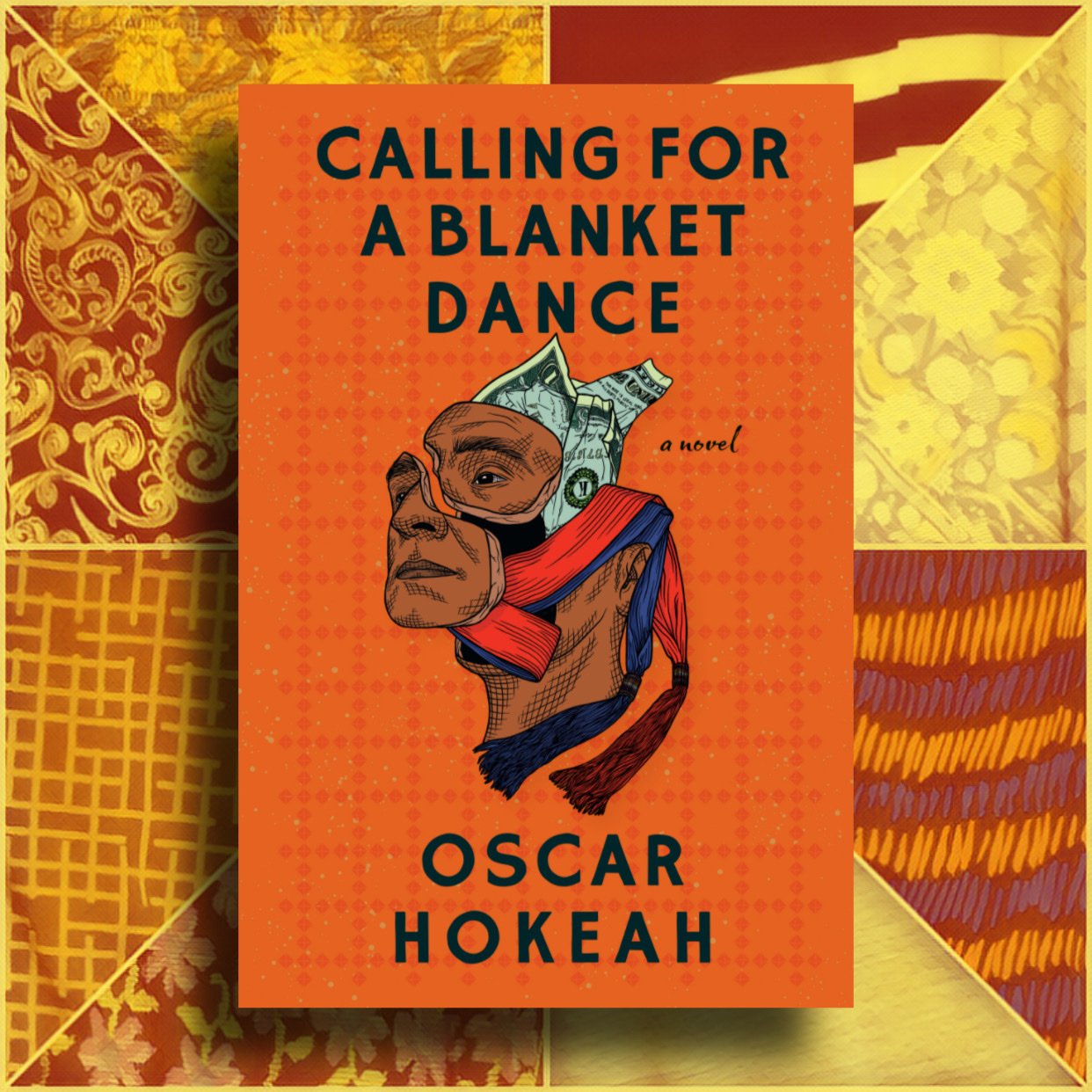
It's not easy writing about yourself. It's awkward. It can come off as egotistical. The shameless self promotion. I apologize, truly, for any of those vibes that may come out of this post. Honestly, it can be rough waters out there for any debut author, and we try to find small ways to get our novels into the hands of would-be fans.
Plus, we work years and years, toiling over words and living deep inside our imaginations to bring readers a vivid, entertaining, and sometimes eyeopening story. My debut novel, CALLING FOR A BLANKET DANCE, has been 14 years in the making. The earliest chapter was written back in 2008, and the debut will hit shelves on July 26, 2022. That's a long journey. We work hard on these projects and are eager to find readers to entertain.
Then we have good news to share and want to tell anyone who's willing to listen. That's part of the reason I'm writing this post. The debut has been honored with "most anticipated" and "highly anticipated" or "key debut" and I'm excited to share the wonderful news. Check out the list below:
- Library Journal (Key Literary Debut 2022)
- Goodreads (Highly Anticipated Debut 2022)
- Buzz Books by Publishers Lunch (Buzz Worthy Book 2022)
- Book Page (Most Anticipated Fiction 2022)
- Bookshop (Most Anticipated Book 2022)
- Bookish by NetGalley (Highly Anticipated Book 2022)
- Changing Hands Bookstore (Most Anticipated Book 2022)
Now if you'll let me share with you a description of the novel:
A moving and deeply engaging debut novel about a young Native American man finding strength in his familial identity, from a stellar new voice in fiction.
Told in a series of voices, Calling for a Blanket Dance takes us into the life of Ever Geimausaddle through the multigenerational perspectives of his family as they face myriad obstacles. His father’s injury at the hands of corrupt police, his mother's struggle to hold on to her job and care for her husband, the constant resettlement of the family, and the legacy of centuries of injustice all intensify Ever’s bottled-up rage. Meanwhile, all of Ever’s relatives have ideas about who he is and who he should be. His Cherokee grandmother urges the family to move across Oklahoma to find security; his grandfather hopes to reunite him with his heritage through traditional gourd dances; his Kiowa cousin reminds him that he’s connected to an ancestral past. And once an adult, Ever must take the strength given to him by his relatives to save not only himself but also the next generation of family.
How will this young man visualize a place for himself when the world hasn’t given him a place to start with? Honest, heartbreaking, and ultimately uplifting, Calling for a Blanket Dance is the story of how Ever Geimausaddle found his way to home.
If my debut sounds like something you'd like to check out, please reach out to your local bookstore and ask them to carry copies of CALLING FOR A BLANKET DANCE. You can also preorder at your favorite online retailer:
- Bookshop
- Barnes & Noble
- Amazon
- Target
- Walmart
- Books-A-Million
- IndieBound
- BulkBookstore
- Indigo (Canada)
To learn more about who I am and where I come from, feel free to peruse my website, read a few blog posts, and check out my social media. I'm most active on Twitter, but I'm trying to find more time on Instagram. I've recently made a TikTok but I'm still learning the ropes (so I apologize if my TikToks are a little crude).
Thank you for hearing out a nothing-little-Native from small-town Oklahoma. I hope you get a chance to read my debut and dive into Ever Geimausaddle's eclectic world. If you have a moment, drop a line in the comments below. I'm always happy to answer any questions and talk shop.
Digesting Fragments as Memories: CALLING FOR A BLANKET DANCE
Let me ask you a simple question: What was a significant event in your life? Moreover, how did it impact you, change you, make you into the person you are? What I like most about this question is how it immediately takes us deep into memory. Suddenly a series of memories flood our minds and we rifle through each to determine which might be the most impactful. Now let me switch it on you. What if I asked each of your relatives about the most significant event in your life?
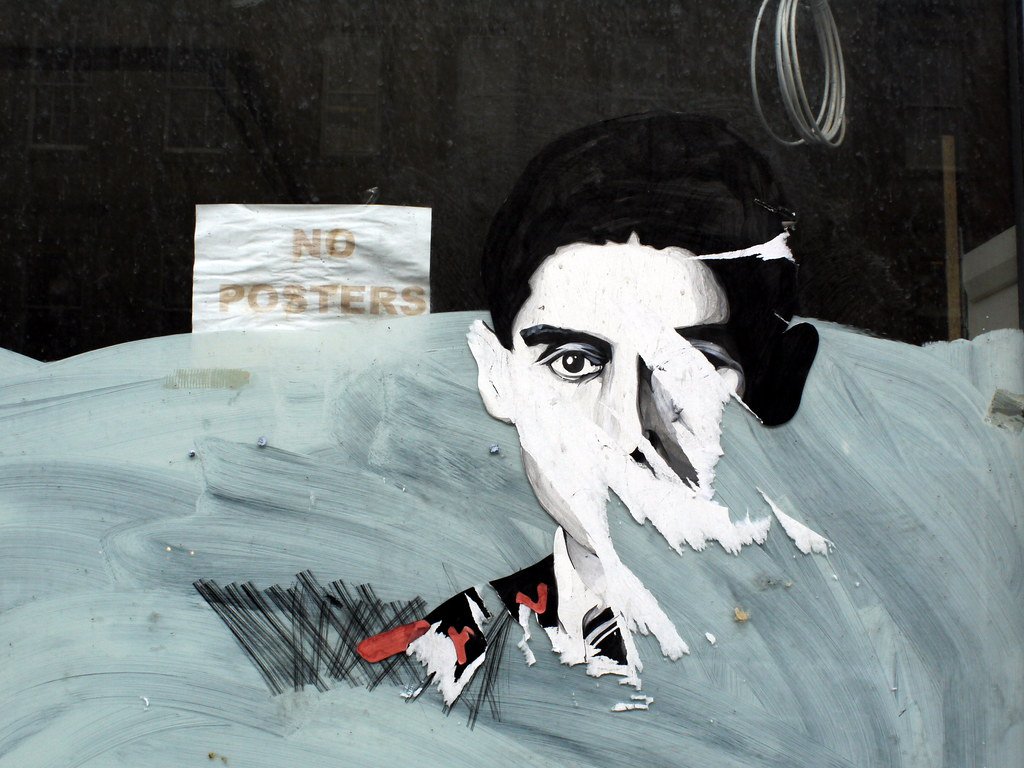
Suddenly, we might have multiple stories. Your grandmother might tell a different story than your grandfather. What about your parents? Your spouse? Your siblings? Your cousins, aunts, uncles? Now we have an entire chorus, a symphony if you will. And in this symphony the music is an ensemble of memory.
“It's enough for me to be sure that you and I exist at this moment.” ― Gabriel García Márquez
One could argue we primarily exist by memory. The memories others have of us. The memories we carry about ourselves. Each moment we share in real time can only be processed in memory. Does this mean there is no here and now? Is memory the only form of existence?
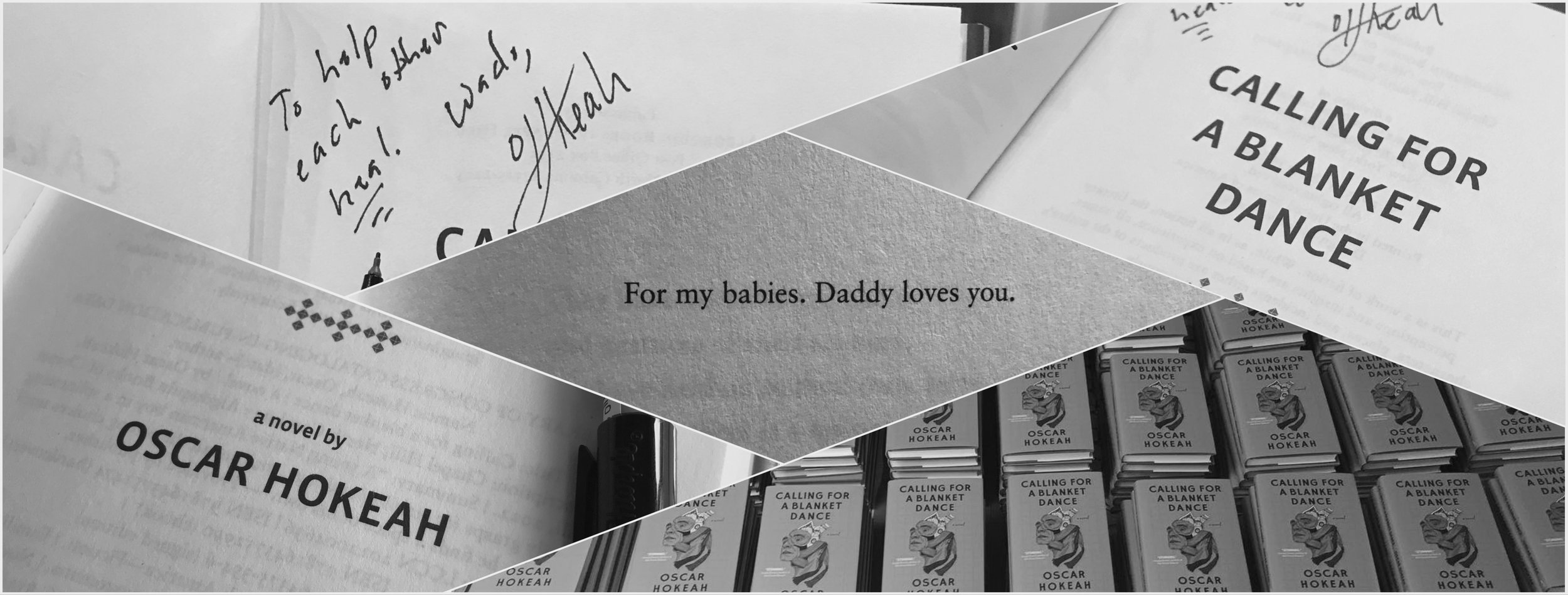
Before I carry on too much longer with all these questions let me say here that my debut novel, CALLING FOR A BLANKET DANCE, allows readers to consider these very questions. The structure of the novel is told by 12 narrators. The main character is Ever Geimausaddle. Each chapter is told by a different family member. We start with his grandmother, Lena, and then move onto his grandfather, Vincent, followed by his uncle, Hayes, and so on and so forth, going through aunties, uncles, cousins, and his sister. Then in the final chapter we hear from Ever himself.
Where the aspect of memory comes into play is the time span between each chapter. Lena tells us a story about when Ever was an infant, while Vincent tells us a story about when his grandson was five years old. Then his uncle follows with one from when Ever was 10 years old. The chapters hop three to five years at a time, and does so into his adulthood, ending when Ever is in his early 30s.
Why would I do this? What's the purpose of spanning so much time between each chapter?
The simple answer: memory. How does our memory work? When I ask you about a significant event, your mind searches for moments in time. It doesn't run in a linear fashion without any breaks from the moment you were born until this very moment. So this begs a bigger question: Do our lives only exist in fragments? If we are simply constructs of memory, how much say do we have in the constructs of our own identity? To my mother, I'm a son, but to my best friend, I'm a brother. In order to truly see into the depths of who we truly are, don't we depend on the memories of others?
“He was still too young to know that the heart's memory eliminates the bad and magnifies the good, and that thanks to this artifice we manage to endure the burden of the past.” ― Gabriel García Márquez
Let the spaces in between each chapter jar you, let them force you into new spaces, let them make you imagine a new version of time--maybe a more honest version of time. Not only will you truly see Ever Geimausaddle as a loving and flawed human being, but you'll forgive yourself for being one too.
“Please — consider me a dream.” ― Franz Kafka
(The image was borrowed from flickr.com)
Debut Novel Cover Reveal Tomorrow!
There I am emailing back and forth with my editor, Kathy Pories, of Algonquin Books about the cover to my debut novel, CALLING FOR A BLANKET DANCE. She let's me know that the Creative Director of Algonquin Books, Christopher Moisan, has found an artist in southwest Texas who does amazing work. He's especially interested in the specific style of art she employs. I quickly click on the attachment they provided. I'm instantly taken by how her work captivates the mind. It's almost like a trap. A beautiful and alluring trap that you never want to leave.
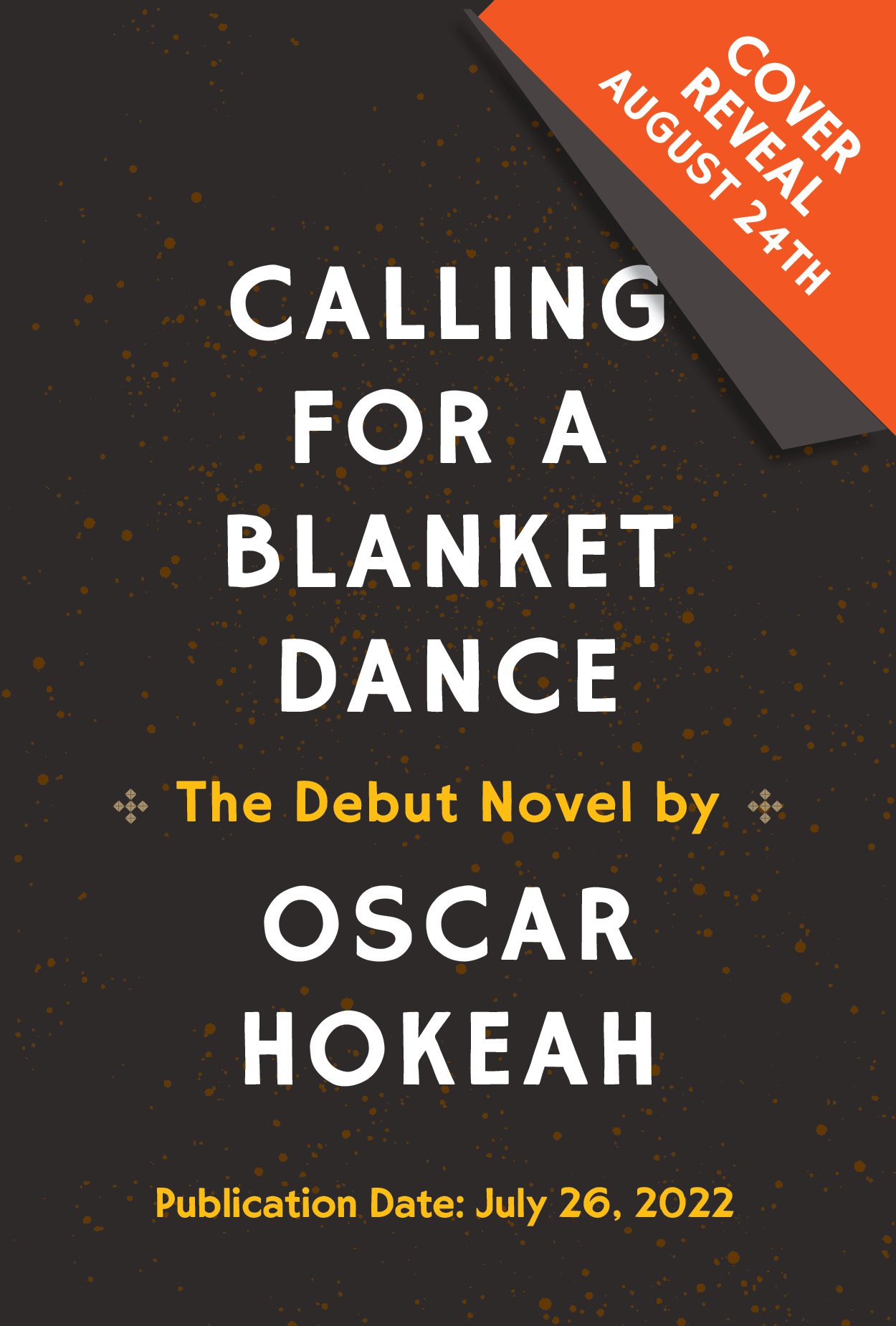
Next thing Christopher reaches out to her to see if she's interested in doing the cover art for the novel. He sends her chapters of the book and we wait patiently. A few weeks pass, and then finally I get the the good news. She's agreed to work with us.
What happens next stuns me. Now I've looked through her website and her Instagram. I know what she's capable of doing as an artist. Her work is well respected by her community and captures dynamics that I had hoped to see in her final piece for the novel. But not only was she able to capture the cultural elements I was hoping, she also made the image come right off the page. All I can tell you is this: this image crawled into my mind the moment I saw it and it has never left. Her ability to lure you into her art is amazing. You'll catch yourself staring, waiting, hoping for the image to go further into your psyche.
And once the image traps you, you'll immediately want to open the book's pages to find more.
The cover reveal happens tomorrow, August 24, 2021, at 2pm Central Time. I can't wait to introduce you to a stunning artist whose work is both radical and enticing.
Overcoming the Criticisms of FX/Hulu Series "Reservation Dogs"
First off, none of us live in the village of the happy people. Secondly, if there was such a story, no one would read nor watch it. Because it'd be a bunch of BS. One of the many pleasures of engaging with art, whether it be film, literature, or the various branches of studio arts, is the freedom we have to think critically about what we consume. When I heard about the series, Reservation Dogs, coming from FX and Hulu, I was excited to watch. I'm always pleased to see Native faces and Native communities in popular culture--especially when it showcases our resilience. We're a beautiful people with unique experiences to share.

I didn't get an opportunity to watch the first two episodes until several days after its initial release. I got caught up in the hype and heard a ton of positive comments. Natives were excited to watch. Finally, a popular representation of ourselves in media.
Then I started to hear the initial criticisms, like Natives being depicted as criminals and a disparaging outlook on community. Furthermore, is this misery porn for audiences who want to see Natives attack other Natives? Folks were also wondering about the sense of community pride and the representation of strong family networks. Moreover, where was the saving grace of cultural participation? There were also criticisms about how the characters don't have Oklahoman accents, which is very distinct.
I don't want to devalue these observations. I think Natives are making some valid points.
There are a few things to keep in mind. Firstly, this series is just starting. It can take several episodes to get into the depth of the storyline. Truly, there is plenty of time for the familial elements to develop. Similarly, hyperlocal Muscogee culture will likely rise to the top as the series continues. It's too early to say what is missing overall. It's like reading the first chapter of a novel and then criticizing the entire book without reading to the end. We, as an audience, don't know yet what will play out as the season moves forward.
When it comes to the criticism about depicting Natives as criminals, I think the show does attempt to show the characters' humanity. Their intent isn't malicious. These are not vicious criminals. Moreover, the creators are touching on an aspect that does exist in our communities. Especially when it comes to violence between youth. We can all attest to gang related activities in our Native communities. Being a published writer myself, I also understand the method of structuring a story with characters at either a low point or a high point. If you start the story with a high point, then you can only spiral downwards. I think starting Reservation Dogs at a low point is a good sign. Now if the characters stay at that low point, then that's a different situation altogether. But like I mention above, the series is still too early in episodes to make that criticism.
I want to take care of this whole "misery porn" BS now and forever. We, as artists, are ascribed to capture life as we've experienced it and transform it--not only as entertainment but as an opportunity for audiences to self-reflect. Like I started this post, none of us live in the village of the happy people. We, as artists, don't have control over an audience's reasons to engage. We have control over how we engage our communities for critical thought and discussion. If people want to make a "misery porn" criticism, then that should be directed at consumers--not creators--to think about how and why they engage with Native art. All in all, it's a great opportunity to have a thoughtful discourse and grow.
Lastly, I'd like to take on the issue with the Oklahoman accent. True, the characters don't have the distinct accent we from Oklahoma expected. I live, work, and love in Oklahoma so I get it. But what we need to keep in mind is that this series isn't "only" for Oklahoma Natives. I'd describe the Native accents used in this series as a "non-regional NATIVE" accent. It's more of a universal Native accent. We do hear it in Oklahoma, like other parts of the United States, but ours is spiced up with a lovable Okie twang. I think the creators did the right thing. The non-regional Native accent makes the show more appealing across the board. It also shows the commonality we have with a shared colonial history, while still accessing a beautiful and unique hyperlocal Muscogee reality. I say well-played to Sterling Harjo and Taika Waititi.

I'd like to leave folks with this: we're early in the show and it's important to support Native arts. We complain about not having representation in popular media, and then when it gets here we bash it. I say let's give Reservation Dogs its due justice and support the show as it continues the season. For myself, I'm excited to see what Bear, Elora, Jackie, and Cheese encounter next--especially as the quirky side cast weaves in and out of their lives.
The Aftermath of the Final Draft: Novels
So I'm about to use this post as catharsis. I've done something tremendous. So momentous that it's a little unsettling. Or maybe I've made it unsettling by overthinking. But I can't help but wonder if this is a normal part of the process once a writer has submitted the final draft of her novel to an editor.
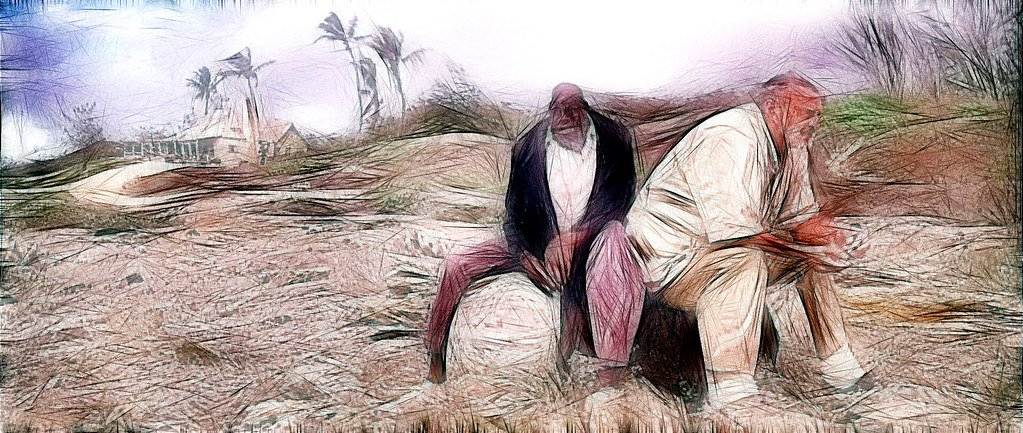
I received edits from my editor a couple months ago, and I immediately went into hiding. All my thoughts were focused on one thing: revise. The closer I came to the deadline, the more intense the focus became. Sure I asked for a couple extension. My book is my baby and I wanted to hold onto it for as long as I could. Then it came to the last extension. The book needed to move toward production, and I had squeezed out every possible moment.
“There is a ruthlessness to the creative act. It often involves a betrayal of the status quo.” ― Alan Watt
Then on Tuesday morning it happened. It was the first day of June. The year was 2021. Just after Labor Day weekend. Rain had been falling off and on for days. Tahlequah, Oklahoma had just left behind it's harshest storms and true summer sun was within grasp. That morning I woke and said, "I'm ready to let the book go. It's time." I had spent all my mental energy on this day.
Fast forward about two hours, I typed a short note in an email, clicked attach, and then the last step: send. It was done. The final manuscript shot into cyberspace and landed inside the inbox of my editor and agent. Congratulatory emails returned. My final draft was officially submitted.
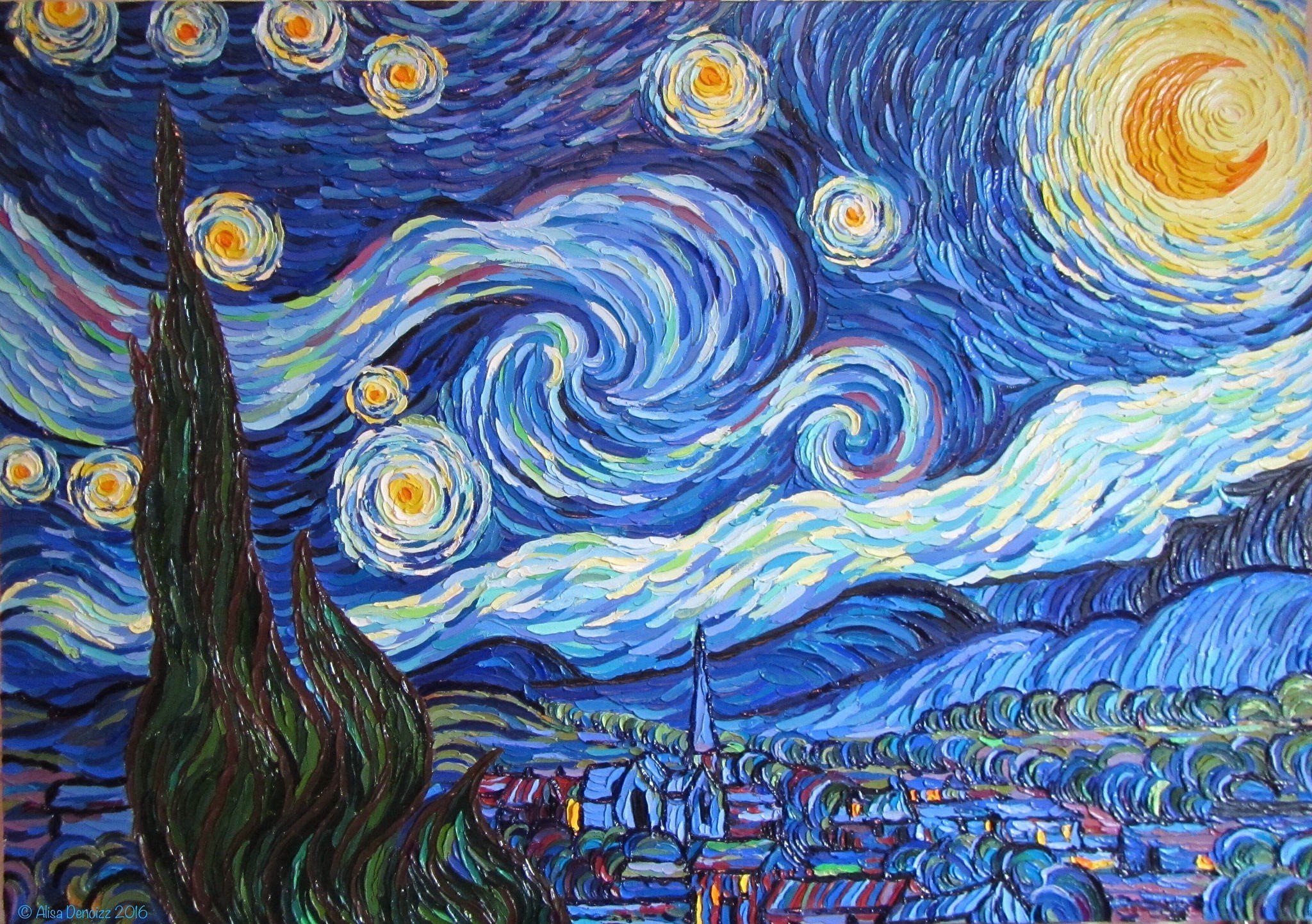
What happened next was a complete shock. I thought I'd be relieved and excited and would run around the office giving everyone high fives and people would take me out for a meal and some drinks and I'd fly in a jet to Peru and dine with elite writers from multiple hemispheres. But no. That did not happen.
What did happen? I was instantly depressed. I was suddenly sad. I was oddly withdrawn.
I thought, What's going on with me? This can't be normal.
“Writing is a struggle against silence.” ― Carlos Fuentes
I had spent so much time focused on the revisions and the moment I'd click send that I had not even thought about what was to come afterwards.
The only thing I can equate it to is the same feeling I had when my three adult children moved out. Like the time when my oldest son and I had breakfast one day. An innocent enough meal. But it was the first meal we had together where he'd leave in his car to his apartment and I'd leave in my car to go to my home. He wasn't coming home with me. He was no longer a child, and what we once had would never be the same again.
I suddenly realized I was mourning the loss of my book. I'd never delve into its pages the same way again. I'd reread the pages at some point in the future, but it'd never be the same. I no longer had anymore influence on it's words, it's chapters, it's characters. Now they had to do everything thing on their own.
This was the moment I realized why I kept asking for extensions. Certainly, there were tweaks to be made, but I couldn't deny there was this sense of trying to hold on, trying to have one more moment, one more memory before it all changed. Even if I didn't consciously realize it. I was holding on as long as I could.
It's scary when your child steps into the big, bright world. There are so many obstacles and pitfalls. But you can't be there for everything. To a certain extent, your baby needs to make mistakes--no matter how young you perceive him to be.
“Some part of me knew from the first that what I wanted was not reality but myth.” ― Stephen King
I've been working on this novel for a very long time. The oldest story in the novel was written in 2008. That's 14 years ago! By the time my book hits the market, it'll have been 15 years from the moment the oldest story was written. It took one and a half decades for this novel-in-stories to reach maturity. That in itself is a unique story to share.
But I have to move forward. I've popped open my other two novels and added a sentence in one, reread a few pages in the other, and stared at the line of chapters running down my flash drive. I want to be ready to move forward. But I might have to give myself a little more time. I thought this post was going to be my release point. But now I'm suddenly realizing that I'm still trying to hold on a moment longer.
Self-Imposed Crippling Frustration Under a Wave of Social Justice Advocacy
It was Saturday night when I knew I'd smudge myself and my house with sage the next day. There had been a build up. With the media exposure of police shootings and the new energy for social justice as a response, I was caught up in the energy. But not without personal justification. Under Trump's toxic atmosphere, my beloved Cherokee community quickly became as divisive as the rest of America.

I started to hear comments that I hadn't heard before, and this time from the mouths of racially white Cherokees. What happened? Why were dark skinned and full blood Cherokees so viscerally hated? And all of a sudden?
Well, it wasn't all of a sudden. This divide between full-blood, half-blood, and racially white has been a part of Native communities for a long time. We can go back as far as the initial reservation era of the 1800s. Take Quanah Parker (Comanche) for example, who is depicted in the image above. He was half white and half Comanche. While the Comanche people did not elect Quanah as their spokesperson, the U.S. government made it clear to the tribe that Quanah would be the only person they were going to deal with. So the Comanche chiefs who were elected inside the community were ignored, while Quanah was selected by those in power.
Why do Natives only gain access when we display an allegiance to white supremacy?
It's unfortunate how we can't overcome this history, where race determines power, as opposed to ability, talent, and strength. Ta-Nehisi Coates writes, “But race is the child of racism, not the father.” And we've heard since the 1990s that "race is a social construct." But then again, everything humans do is a social construct, and this particular construct has murdered millions, enslaved millions, and continues to oppress millions today.
So why was I hearing comments? Why were decisions being made that had full blood Cherokees scrambling? All of a sudden I was reminded of my teen years growing up in Tahlequah, when Cherokees were murdered for being Cherokee, when Cherokees talked about the underground culture in hushed tones, and when Cherokees all too often contorted ourselves under the boot heels of white supremacy.
Then as an adult I moved away for a decade.
When I returned to Tahlequah in 2015 I found a very different Cherokee Nation. There were liberal white Cherokees displaying themselves as allies to "identifiable" Cherokees. There was more willingness to engage and the blatant racism that I once encountered had seemed to disappear.
Then Trump was elected.
Slowly there was an erosion. I started to hear more and more underhanded comments about "identifiable" Cherokees, which is a new white supremacist term for targeting anyone who has traditional Cherokee phenotypes: Dark skin, high cheek bones, strong jawlines, narrow eyes. More and more of my racially white peers would say "Indian this" and "Indian that," and I'd think to myself, "I thought you were Indian." But according to the UNSPOKEN racial line, they were not Indian like "identifiable" Indians. Racially white Cherokees were somehow superior. This language grew and grew over the last four years until it reached a point recently where racially white Cherokees were blatantly and openly talking about "Drunk Indians" and how "identifiable" Cherokees were criminals. The tone was etched with superiority, leaving dark skinned and full blood Cherokees feeling like we had no power, like we were being targeted. And you have to understand, the majority of enrolled Cherokees are racially white. It's not a spectrum, not even close. Those of us who live and work here know the truth. "Identifiable" Cherokees are the minority. Cherokee Nation's racial makeup is identical to the U.S. The darker your skin, the harder your life.
I watched full bloods in my circles cower and back down when racist comments were made. Completely silenced. And half-bloods who have a full-blood parent biting their tongues. Some of us have spoken up, but it doesn't come without feeling like we're going to receive retaliation, retaliation for asking people to not say "drunk Indian." Can you believe that? Basic human decency. It's frustrating that we have to beg to be treated like people. It's frustrating that I have to remind folks that we're human beings. Why is it so extreme to have respect reciprocated? Why would I have to say, "I can't breathe," when it should be obvious that racism is a social choke hold?
I started writing this post wanting to write about how I needed to let go of the frustration, how maybe it was crippling me to think about it. More or less, blaming myself. But now? I wonder if racially white Cherokees ever think about crippling their own supposed brothers and sisters? That's what we're supposed to be, right? Brothers and sisters? We all come from "One Fire," right? If so, why do they make comments like their not Native? Why do they limit how many dark skinned Natives get positions of power? Why do they fear dark skin so much that they'll have just one or two "tokens" to keep in their back pockets? If we all come from "One Fire," why did I have to write this fucking post?
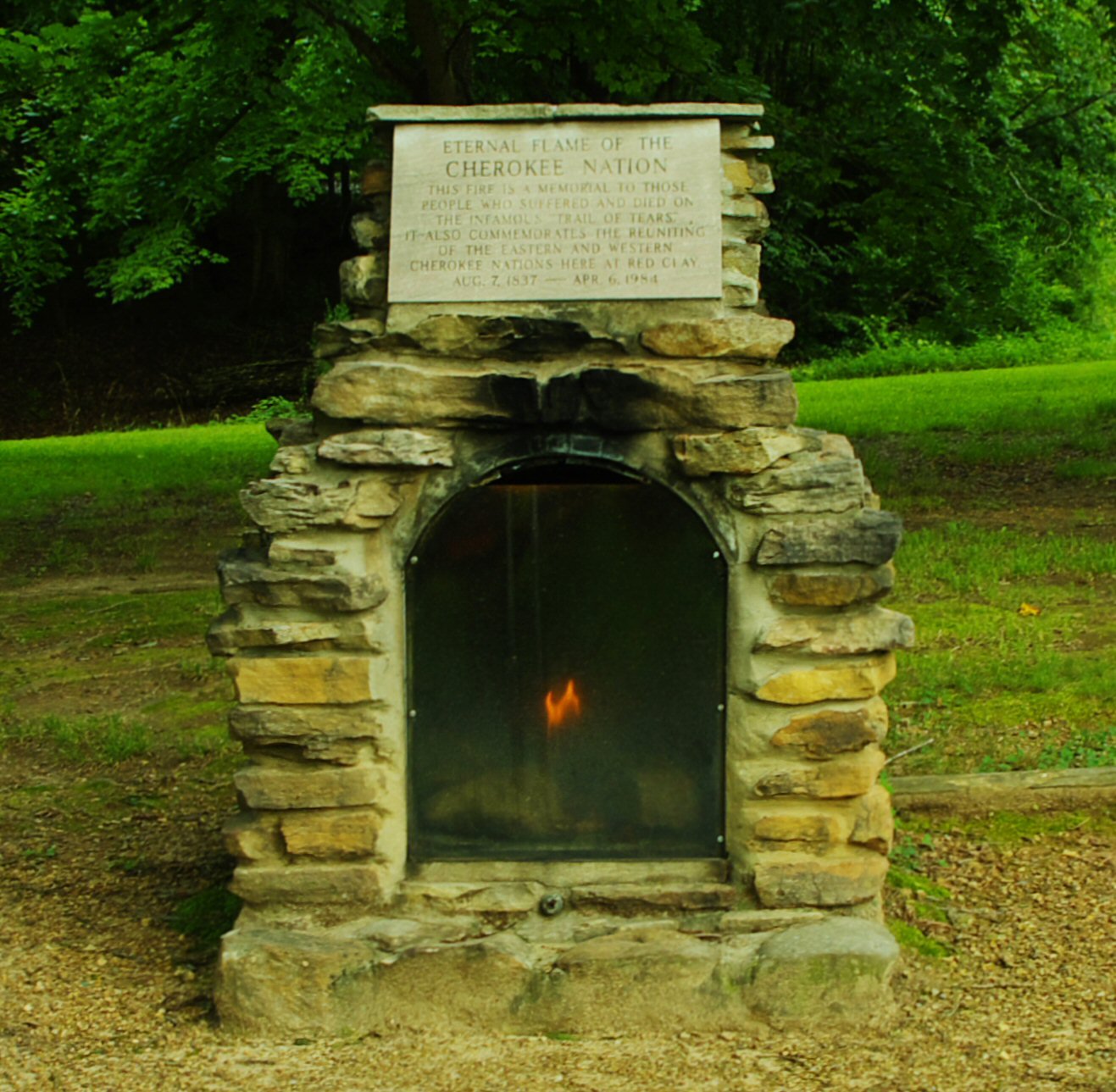
(Images were borrowed from commons wikipedia)
Giving Back: Murrow Indian Children's Home Needing Assistance
I get mentally stuck sometimes, and frustrated, when I think of the disparity rates in the communities I serve. I'm Cherokee and Kiowa. I live in Tahlequah, Oklahoma and work for Indian Child Welfare. I've worked my entire career serving Native communities, working diligently to correct the disparity rates, and every time I see a Native person walking down the street strung out on meth, fidgeting and impulsively picking at their skin (the telltale signs of meth addiction), it breaks my heart. I get frustrated at the disparity rates among Native Americans and see first hand the negative impacts caused by historical trauma.

There is one way to change the disparity rates and that's by giving to a well vetted Native organization, like the Murrow Indian Children's Home in Oklahoma. It's more commonly called the Murrow Home for us locals. They provide care for Native children and are currently in need of specific items. Below you'll find a link to their official Facebook page:
We all want to help and often we don't know how. While I've dedicated my career to working with Native youth, many of us have occupations outside this field but equally want to contribute. My recommendation is to go through the process of vetting Native organizations. Don't wait for a Native person to do so. It can be frustrating for people of color to always have to do the leg work. If I can care enough about Native people that I'll do the work to track down organizations and talk to employees from specific organizations, then I expect anyone could do the same. Not to be harsh, but people of color are not slaves to someone else's enlightenment. Although, when I see a Native organization sending out a call, like the one on the Facebook page above, I'll go out of my way to help them meet their needs.
If you'd like to know more about the Murrow Indian Children's Home here is a link to their website: The Murrow Home. Also, here is a link to their amazon wish list page: Amazon Smile Murrow Home. Additionally, if you'd like to learn more about the history of The Murrow Home here is an article: Cherokee Phoenix Article on The Murrow Home.
I started my career working with a Native group home so my heart is close to helping children in those troubling circumstances. I know what it's like to mentor youth who need stability and safety in their lives, who need a strong role model. The Murrow Home is a rare group home that works specifically with Native youth, including Cherokee children from tribally specific Cherokee communities. If you're in a position to give back, please do so by reaching out to The Murrow Home directly or following one the links above.
(Image above was borrowed from flickr)
Indian Child Welfare Novel: Lessons in Cooking Coded Cake
If you're getting silenced, or an attempted silence, as an artist/writer this is a sign you're doing something right. The ACLU has extensive documentation about the rights of artists to speak our minds and advocate for communities. Intimidation tactics from white supremacists didn't stop me from writing my first novel, UNSETTLED BETWEEN, and they won't stop me from writing my "ICW" novel. Power hungry racists will always fear artists. We have a power they'll never have: the ability to move audiences to connect with a deeper sense of their own humanity. You might be wondering why I'm writing this post. It's not exactly one of my typical updates on my writing projects. Usually I use this space to brainstorm concepts in a story I'm writing, but today I'd like to talk about how fiction writers can capture real life in their pages. Moreover, how artists overcome coercive tactics meant to silence our voices.
You might be wondering why I'm writing this post. It's not exactly one of my typical updates on my writing projects. Usually I use this space to brainstorm concepts in a story I'm writing, but today I'd like to talk about how fiction writers can capture real life in their pages. Moreover, how artists overcome coercive tactics meant to silence our voices.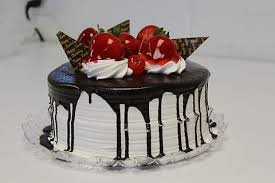 As you already know, when I write I do so from personal experience. I take what I see around me, whether in my personal life or the lives of the people in my proximity, and I transform it into a fictional space. So there are a few ways in which I pull this off. I've had people ask me, "How can you do that and not offend people?" Well, the short answer: It can still rub certain people the wrong way. But the truth and honesty in the work will always shine through and people can't deny the craftsmanship in turning real life into fiction. At the end of the day, only the villains will become detractors. Most will be flattered. I always say, "If you don't want to be a villain in fiction, the don't be one in real life."The primary things to consider are more obvious: change names, alter places, and code oppression. The issue for white supremacists is their legacy. If you, and others around you, talk and gossip about their behavior, it's already known in the community how they are oppressive. Just enough has to come to the surface before those in higher positions of power catch wind. The system will ignore oppressive acts only as long as it has to. Once something becomes news worthy, then those in the highest reaches of power will put a stop to it. The oppressors will do everything they can to keep things from getting to a boiling point. Hence the suppressive tactics and attempts at silencing artists.
As you already know, when I write I do so from personal experience. I take what I see around me, whether in my personal life or the lives of the people in my proximity, and I transform it into a fictional space. So there are a few ways in which I pull this off. I've had people ask me, "How can you do that and not offend people?" Well, the short answer: It can still rub certain people the wrong way. But the truth and honesty in the work will always shine through and people can't deny the craftsmanship in turning real life into fiction. At the end of the day, only the villains will become detractors. Most will be flattered. I always say, "If you don't want to be a villain in fiction, the don't be one in real life."The primary things to consider are more obvious: change names, alter places, and code oppression. The issue for white supremacists is their legacy. If you, and others around you, talk and gossip about their behavior, it's already known in the community how they are oppressive. Just enough has to come to the surface before those in higher positions of power catch wind. The system will ignore oppressive acts only as long as it has to. Once something becomes news worthy, then those in the highest reaches of power will put a stop to it. The oppressors will do everything they can to keep things from getting to a boiling point. Hence the suppressive tactics and attempts at silencing artists. The last thing they want is a permanent record of their hate. Remember: we're all judged by our endings. The ones in real life, and the ones we write. If the last thing people know about you is that you're a pedophile, then everyone in the community will remember you as a pedophile. It doesn't matter how much you've done before. Preying on a child, even if that child was a vulnerable disadvantaged teen, is inexcusable. And they might think people don't know they were fired from a job working with youth. But the right people always know. The next time you see them ask, "Why were you fired from that youth organization?" Likewise, if community members read coded fiction stories divulging poorly treated vulnerable populations, those in the community will know the code. They'll know who so-and-so is, and if they don't, all they have to do is ask relatives who will ask other relatives. In small town politics, word moves fast. And the power of gossip is something no one should underestimate. Believe me when I say this: Writers are seductive monsters. Our love lulls audiences into a mind altering hypnosis. And we're very aware of what we're doing. I've said this before,"We’re persuasive colonizers seeking to intrude on your sensibilities."When taking a real event, involving real life people, I not only change their names and description, but I also layer each story with other layers of truth. So what I'm doing is stacking multiple real life situations atop each other, and this turns a true story into fiction. To be completely honest, a single interesting event in real life is not good enough to entice a reader. You have to add more and more. Like sugar is the thing that makes a cake taste great, but it's the multitude of ingredients that give you the experience of eating a cake. Otherwise, we'd all be pouring bags of sugar down our throats, lol. How the ingredients are cooked together and presented make for a complete "cake experience." Turning real life into fiction works the same way.
The last thing they want is a permanent record of their hate. Remember: we're all judged by our endings. The ones in real life, and the ones we write. If the last thing people know about you is that you're a pedophile, then everyone in the community will remember you as a pedophile. It doesn't matter how much you've done before. Preying on a child, even if that child was a vulnerable disadvantaged teen, is inexcusable. And they might think people don't know they were fired from a job working with youth. But the right people always know. The next time you see them ask, "Why were you fired from that youth organization?" Likewise, if community members read coded fiction stories divulging poorly treated vulnerable populations, those in the community will know the code. They'll know who so-and-so is, and if they don't, all they have to do is ask relatives who will ask other relatives. In small town politics, word moves fast. And the power of gossip is something no one should underestimate. Believe me when I say this: Writers are seductive monsters. Our love lulls audiences into a mind altering hypnosis. And we're very aware of what we're doing. I've said this before,"We’re persuasive colonizers seeking to intrude on your sensibilities."When taking a real event, involving real life people, I not only change their names and description, but I also layer each story with other layers of truth. So what I'm doing is stacking multiple real life situations atop each other, and this turns a true story into fiction. To be completely honest, a single interesting event in real life is not good enough to entice a reader. You have to add more and more. Like sugar is the thing that makes a cake taste great, but it's the multitude of ingredients that give you the experience of eating a cake. Otherwise, we'd all be pouring bags of sugar down our throats, lol. How the ingredients are cooked together and presented make for a complete "cake experience." Turning real life into fiction works the same way. Saying so-and-so is a racist and oppresses every dark skinned person they encounter is intriguing in the most awful way possible, but when you add that so-and-so has an opiate addiction and throws women under the bus--now we're getting deep and dirty. Take that and add how their child is a meth addict and they've used their power to clear criminal charges; then all of a sudden it's getting really real. But you get the picture. It's taking multiple real life events from different people around you and smashing them together.Writers sacrifice for the solitude needed to capture an entertaining version of real life. Ultimately, no matter how "literary," that's what we're doing, that's our job: to entertain. Audiences love stories flavored with the sweetest truth, savoring each bite like the latest gossip in town. They will read and reread pages in your novel to chew on the layers, to find the truth about the people they know. Now can you imagine anything better than cake?
Saying so-and-so is a racist and oppresses every dark skinned person they encounter is intriguing in the most awful way possible, but when you add that so-and-so has an opiate addiction and throws women under the bus--now we're getting deep and dirty. Take that and add how their child is a meth addict and they've used their power to clear criminal charges; then all of a sudden it's getting really real. But you get the picture. It's taking multiple real life events from different people around you and smashing them together.Writers sacrifice for the solitude needed to capture an entertaining version of real life. Ultimately, no matter how "literary," that's what we're doing, that's our job: to entertain. Audiences love stories flavored with the sweetest truth, savoring each bite like the latest gossip in town. They will read and reread pages in your novel to chew on the layers, to find the truth about the people they know. Now can you imagine anything better than cake?
(Images were borrowed from pixabay, pxfuel, piqsels and flickr)
Mexican Indian: The Shifting Indigenous Identity of Turtle Island
Call it evolution or enlightenment. Our perspective is broadening. Where we once only had the capacity to see ourselves in strict hyper local terms, now we can access the universal. In fact, both the universal and the hyper local are needed as checks and balances. In the narrow reaches of our identity, people are quick to lock themselves into violent identities--those in need of contention to exist, to be relevant, to matter. It takes a little dialectical thinking to incorporate a universal identity, where we have the intellectual capacity to, simultaneously, know how we are all connected.

Let me give you a little context and my personal ethos.
My father was an immigrant from Chihuahua, Mexico. My mother is a full blood Kiowa/Cherokee from Oklahoma, United States. I am a product of intertribal, multicultural, transnational, and hyper local tribal histories. Oklahoma was once known as Indian Territory and became the world's largest Prisoner of War camp. Chihuahua was once home to 200 tribes before Spanish conquistadors committed genocide to mine silver from the region's mountains.
When I look south of the American border, I remember being five years old and running into the Chihuahua mountains with my cousins to shoot homemade slingshots. I also remember the Indigenous phenotypes of Indigenous ancestors in my cousin's faces. Having been raised in Oklahoma primarily with my Kiowa and Cherokee people, my perspective has always been an Indigenous one--even before I knew the meaning of the word. I rightly assumed all my cousins in Mexico were Indigenous like myself, since we had the same brown skin, narrow eyes, and black hair. The truth expounded by innocence is always convoluted by fragile adults seeking power over people.
The Náhuatl Language in México: http://www.houstonculture.org/mexico/nahuatl.html
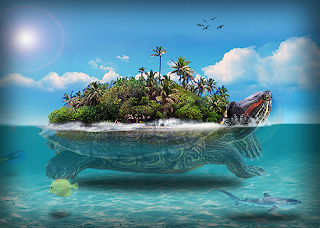
I grew up attending traditional powwows with Kiowa and Comanche people in southern Oklahoma, dancing with my family, wearing bright regalia made by my mother's and aunt's hands. In my youth, we "lived" at the powwow grounds for days at a time. Camping in a tent was as common as sleeping in my bed. While I was one of a few Kiowas with Mexican heritage, we all had the same phenotypes. I didn't look any different from my family, and certainly wasn't treated differently.
Because in my youth I had experiences in Chihuahua, Mexico and experiences in Oklahoma, United States, as an adult the border between Mexico and the U.S. seems arbitrary. Drawn by power seekers and maintained, physically and psychologically, to keep Indigenous people from acknowledging our commonality. Which begs the question, why are colonizers so afraid of Indigenous people allying with each other across Turtle Island?
I'm reminded of the various tribal confederacies in North America who once attempted to unify Indigenous people, and the most famous in the U.S. was Tecumseh's Confederacy (Chief Tecumseh Urges Native Americans to Unite), which ultimately lead to siding with European allies in the struggle for retaining control of traditional lands. Similarly, there were alliances on the Southern Plains of North America, where Kiowas allied with Comanches and held back westward expansion for 100 years (Oklahoma Historical Society). Once they extended their alliance to include the Cheyenne and Arapaho tribes, a confederacy of Indigenous tribes dominated the Southern Plains of North America.
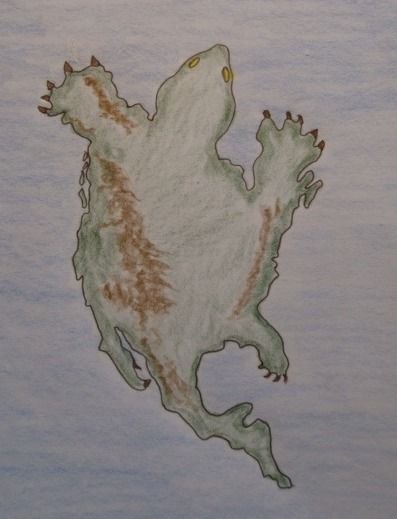
Needless to say, the circumstances that drove Indigenous people in the past are radically different than our need to unify today. Where land base was a primary mode of those alliances, today we are tasked with protecting not only a way of life but more importantly how that way of life is inextricably tied to land based practices. Moreover, to stand against the contamination of earth, air, and water--the three elements needed for human survival. Our plight to unify isn't strictly for the benefit of Indigenous peoples, but for all people to survive and live healthy lives. The environmental war being waged against Indigenous people in Canada is the same war being waged against Indigenous people in Mexico. Whether we're looking north or south, we, as Indigenous people in the United States, have allies in both directions. Why would we limit ourselves to myopic, hyper local identities? Because of a language barrier? Our ancestors developed sign languages to navigate dozens of tribal languages. So we can't beat one colonial language? We're as smart as our ancestors and have the intelligence to know how outdated people lock themselves into identities based in violence. We're smart enough to unfollow and unfriend and silence those seeking to keep Indigenous people from unifying. Outdated practices will only serve to keep Indigenous people fighting with each other, where neo-tribal politics can see the unifying history--how Native people were not only forced to flee into Canada, but to also flee into Mexico.
And now it's time for a return.
(Images were borrowed from The Canadian Encyclopedia, Pinterest, and Facebook.)
For Literary Eyes Only: Budding Archetypes for the Native American Literary Tradition
I'm open minded and enjoy talking to people about their Native ancestry. Folks get comfortable with me when they know I'm not going to judge them for admiring Native people, so they share their family lore. If they're writers, they'll likely mention a project they're working on where they have characters who are Native. Out of respect, they'll ask, "Can you make sure I'm not doing anything offensive?" and ask me to read their work. If I have time in my schedule, I'll gladly do so, but I've been busier than usual over the last year and haven't been able. This is part of the reason why I wanted to construct this list. This article is a serious examination of character archetypes for the purpose of creating literature. A unique approach situated from a Native lens.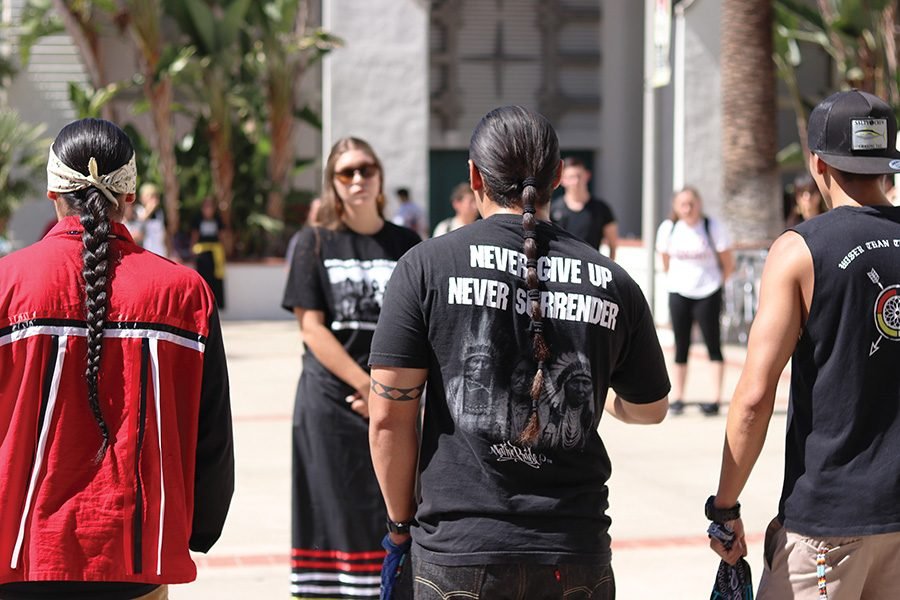 I like reading Native characters in books, and I'm often surprised when one comes up because usually it only happens in books that are specifically about Native people. So when I'm reading an adult fiction book outside that context I don't expect Native characters to arise. As you can tell by this article, I don't have qualms about non-Native writers writing Native characters. I draw the line at exploitation. Meaning, don't pretend to be Native and try to take awards, resources, and space from aspiring Native writers (stealing from the smallest minority in the U.S. is disturbing, and we have the highest disparity rates so it's harmful). The solution is simple: Write as an ally. Everyone wins.I say exercise your creative muscles and write a character who is Native. All writers take a risk when we "create" our characters, especially those who are not our own gender, race, class, or sexual orientation. Which is, more often than folks realize, every time we sit down to write. My line of thinking falls in line with Zadie Smith, who wrote a succinct and brilliant article about the subject, "Fascinated to Presume: In Defense of Fiction." I highly recommend you seek out her article in The New York Review of Books before you presumptuously make uneducated remarks in the comments section below.Another reason I'm motivated to create this list of archetypes has to do with Native literature itself (and I'm not going to get into the debate about "Native Lit" as a category or not--I think having our own category keeps the exploiters in check). The growing number of Native people writing literature has grown exponentially over the last decade. More and more of us are ready to step up and fill this "unmet demand" for Native American Literature. Readers are fascinated by our unique experience, and I feel they are seeking to "remake" their identity, or reconstruct it into one that's less destructive. I'd like to offer readers the opportunity to reflect on their identity by engaging with our own. And if I can do my part to make the world a less hostile place, then I've done something beneficial for not only my children but future generations, who are tasked with one choice: carry our trauma or carry our healing.
I like reading Native characters in books, and I'm often surprised when one comes up because usually it only happens in books that are specifically about Native people. So when I'm reading an adult fiction book outside that context I don't expect Native characters to arise. As you can tell by this article, I don't have qualms about non-Native writers writing Native characters. I draw the line at exploitation. Meaning, don't pretend to be Native and try to take awards, resources, and space from aspiring Native writers (stealing from the smallest minority in the U.S. is disturbing, and we have the highest disparity rates so it's harmful). The solution is simple: Write as an ally. Everyone wins.I say exercise your creative muscles and write a character who is Native. All writers take a risk when we "create" our characters, especially those who are not our own gender, race, class, or sexual orientation. Which is, more often than folks realize, every time we sit down to write. My line of thinking falls in line with Zadie Smith, who wrote a succinct and brilliant article about the subject, "Fascinated to Presume: In Defense of Fiction." I highly recommend you seek out her article in The New York Review of Books before you presumptuously make uneducated remarks in the comments section below.Another reason I'm motivated to create this list of archetypes has to do with Native literature itself (and I'm not going to get into the debate about "Native Lit" as a category or not--I think having our own category keeps the exploiters in check). The growing number of Native people writing literature has grown exponentially over the last decade. More and more of us are ready to step up and fill this "unmet demand" for Native American Literature. Readers are fascinated by our unique experience, and I feel they are seeking to "remake" their identity, or reconstruct it into one that's less destructive. I'd like to offer readers the opportunity to reflect on their identity by engaging with our own. And if I can do my part to make the world a less hostile place, then I've done something beneficial for not only my children but future generations, who are tasked with one choice: carry our trauma or carry our healing.
Mixed Blood In'din
I'm going to start with this one because I fall into this category and can speak to it quite effectively, lol. You'll see this archetype in just about every book written by a Native author. The most recent is Tommy Orange's novel, There There. I highly recommend picking up this book for a contemporary examination of mixed blood heritage in an urban American environment. It hits the mark in every way. But there are a number of writers who speak to a mixed heritage motif, such as Louise Erdrich, Brandon Hobson, and Susan Power. All of whom I would recommend.So what should we consider when writing a Native character of mixed heritage. From personal experience, being half Native and half Latinx, I've not had the self-hatred for being mixed, but that's a popular way of presenting this identity. It's true that mixed bloods often run into discrimination for "not being In'din enough," but I've run into the romanticization for being half Latinx more often than the discrimination. Often I'm seen as an anomaly and people are fascinated by the story of my Kiowa/Cherokee mother, who is from Oklahoma, United States, meeting my father, who immigrated from Chihuahua, Mexico. Typically, people want to know more.I'm only one of a very few Natives from my generation who are half Latinx. I'll say this, though. I live in Tahlequah, Oklahoma (in the heart of Cherokee Nation and work for Cherokee Nation) and there are many Mexican people who have married into Cherokee communities. I work with Indian Child Welfare and I can say undoubtedly that the next generation of Cherokees will have a high number of citizens who are part Mexican.As you'll read in many contemporary stories and many personal narratives online the mixed blood or half blood narrative is one wrought with postmodern dysphoria. Because of being constantly misidentified, people begin to look in the mirror and become dysphoric about what they see. This is where the self-loathing comes in. There seems to be an inability to "own" the diversity in ones lineage so this leads to confusion. The mix blood will suppress and even ignore the part of themselves that is White, Black, Mexican, etc. and instead attempt to only claim Native ancestry. As you can presume, this creates a host of issues, such as becoming over righteous or asserting themselves as an Indian "expert." In this modern era, your character might always try to be seen with full bloods or take pictures with full bloods to post on social media. There's a subconscious desire to be included as a "full blood" by association.
Super In'din
On the surface, this sounds like someone who might be a champion for Native communities. And I'm sure if you asked this guy he'd agree with you, lol. But the "Super In'din" is someone who weaponizes culture. This would be someone who considers himself an "expert" on his culture but he's not truly holding culture the way an elder might hold it. Meaning, he's not trying to pass on his knowledge and wisdom to the next generation. He's more interested in the power his knowledge holds. For character development, it might be better to view this person as a "gatekeeper" rather than an elder.In order to write this character, you're going to need some tribally specific knowledge for him to throw around. And I keep using the gender "he/him" because typically this is a male character--not to say the character couldn't be female, but typically this type of weaponized ego is a patriarchal trait. The most common behavior of a Super In'din is to shame people. So your character could criticize other characters for saying a word wrong or maybe wearing regalia in the wrong way. Your character will have a snobbish demeanor about him and think he's better than everyone. The only time you'll see him submit is when an elder walks into the room. Then he'll cower to the person who holds a more "respectable" way of carrying cultural knowledge.Ultimately, the Super In'din does more damage to his tribal community than he does good. It's better to see him as an extension of the colonizer. Meaning, he's oppressing his own people and doing the dirty work for the colonizer, like a pet. This is how a colonizer has reach into the center of a tribal community. The Super In'din is the colonizer's only way to penetrate the center. Otherwise, a tribal community would be able to heal internally if these individuals didn't exist. But where there is opportunity for power, people will play. So the Super In'din shames and humiliates his own people at every turn for self-fulfillment (hyper individualism).
Born Again In'din
The Born Again In'din could be confused with the Super In'din but there is a major distinction. The Born Again In'din wants to share her knowledge--not weaponize it. So this character will come into tribal culture at a time in their lives when they needed healing. Many recovering addicts become Born Again In'dins, especially if they start attending Native American Church (NAC) as a part of their recovery, which is common. But the Born Again In'din can also be an urban Native who comes to the reservation and gets swept away in learning tribal culture. In about a year, the urban Native will think they're more Native than the reservation Natives, if we're going to use cultural knowledge as a measuring stick.Your character will be overly excited to talk about cultural practices, like speaking the language. They'll start volunteering to say prayers at events. They want to show people how "In'din" they are. This is different than the Super In'din. It's better to see the Born Again as almost evangelical. They're not trying to convert people, but they hold tribal knowledge in such high esteem that they are certain it's going to help others.Here are two common everyday comparisons: If you had a friend who started martial arts and then became completely immersed to the point where all they talked about was martial arts, or if a friend started a new job that was interesting and new and they seemed to only talk about work. This is a similar pattern for the Born Again In'din.To capture this character effectively, you'll also need to have some cultural knowledge, but this person will know everything there is to know about medicinal plants in a specific region. So they'll say things like, "There's a cave outside Pumpkin Hallow where mushrooms grow just right," and they'll proceed to tell you at what phase of the moon when you should harvest said mushrooms. They know their medicinal roots and how to turn them into medicine. Also, they'll be in the process of learning the language. In fact, that's where they'll start. They'll be gungho about tribal language and use it as often as they can. This is where the Super In'din can shame the Born Again by constantly pointing out where their wrong, which can be often because they are in effect "students" of their own culture and are trying to gain more knowledge.The fruition of this character usually happens in one of two ways. They can become like the Super In'din themselves and start shaming other Natives. Or they can become a "savior" type and espouse wisdom to help the community.
Activist In'din
The Activist In'din has garnered some new attention with the rise of the #NODAPL movement, and now we have numerous protests around the world where protectors are standing up for ecosystems. But this archetype began in the 1970s with the rise of the American Indian Movement (AIM). In fact, AIM has maintained its presence since those early years and are the foundation for this current wave of activists. If not for AIM, then the current identity of "eco protectors" would not exist.Activist In'dins are our elite intellectual fighting force. It's better to see them as being more like a special forces unit, like Seal Team Six of the U.S. Navy. In fact, many of its members are veterans. If you're writing one of these characters, you're not going to see them very often. You might hear about them. But they are always serving as a protector at one of the many protests. They'll engage fully at one movement and when the protest is dismantled, then they'll move to another. In the flux, this character might show up in one of your stories, unless your story is about a specific protest. But when they show up, they'll be there for only a short time before they're off to the next eco protest.Behaviorally, your character will know the legal system. Activist In'dins have been arrested dozens if not hundreds of times, depending on their age, and can name their rights at the drop of a hat. Similarly, they'll introduce themselves as a Prisoner of War, saying, "My name is Oscar Hokeah, Gkoi'gkoo/Tsa'la'gi, slave/prisoner of Indian Territory/Oklahoma forcibly relocated by the Medicine Lodge Treaty of 1867 and the Treaty of New Echota of 1835." Not only are they historians but experts on specific treaties that affected their tribe.You can draw your characters as having a military type of personality. If you've had relatives in the military, then you can borrow from their demeanor. They tend to be very serious and ready to argue. Many of these individuals come from Law School and will spend a period of their young life at protests before they move on to budding careers as tribal lawyers. I'd describe these characters as being ready to serve. If you need something done, your Activist In'din character will be the first to volunteer to do it.
Hipster In'din
I saved the best for last. The Hipster In'din is the newest archetype and started showing itself about ten years ago. Image became god with the rise of social media, and these guys love themselves more than their mommas ever could. Lol, I'm teasing. Kinda. But the Hipster In'din is very concerned about trends and will jump onto the latest. If the trend is a Native protest against a pipeline, then they'll routinely post their personal opinions on social media. As soon as the trend changes to the protest of a mountain, so will their tweets. These guys are selling a product and that product is themselves. But this archetype is a global archetype so we all know someone like this. I'm just putting this into a Native context.Behaviorally, the latest trend is to be cynical so cynicism is the language of the Hipster In'din, but it's a special brand of cynicism. First you have to say something very sincere and when real human emotions surface you stuff them back down with a cynical comment, like, "Trump wants to start a race war, but at least I have my coffee," and then laugh. Your Hipster In'din character will need to be seen at trendy locations or trendy events. It'll all come through via social media. The major distinction will be the need to hold a certain "image." And the clothes will match the cynical language.The Hipster In'din character will carry themselves like they don't really care about anything or they are so disconnected that no one can hurt them. They are too cool to care. It can come off as arrogant, but it's an arrogance that's not fooling anyone. Other people in your story will be able to see it as a protective quality. The cynicism and arrogance is a way to hide from the pain of the world. Which will in turn make them appear to be even more fragile than if they were genuine.
Closing Thoughts
The above archetypes are found not only in contemporary Native American literature but also in modern Native society. They are the budding archetypes of our generation. My intention behind the list is to offer Native writers and non-Native writers character traits when developing their storylines. Discussions about literary archetypes, such as the hero, the villain, and the victim are common in literary classrooms, but we writers also consider the birth of new societal archetypes, such as the jock, the prom queen, and the nerd, which are then transferred into literary devices for writers. In the same vein, I offer the above archetypes as a nuanced approach to the literary tradition.
(Image borrowed from The Daily Aztec)
The 12 Year Journey of Unsettled Between
I spend a lot of time thinking about love, and what I'm about to discuss here is in the vein of love. But a love for cohesiveness, a love that desires modalities in cooperation rather than competition. Certainly, it took the very pessimistic concepts around Baudrillard's philosophy to engender my thoughts on this subject. But without Baudrillard I would've never reached this conclusive ending: competition is a mere copy of a copy. I hear you asking "So then what's the original source?" My answer: inspiration.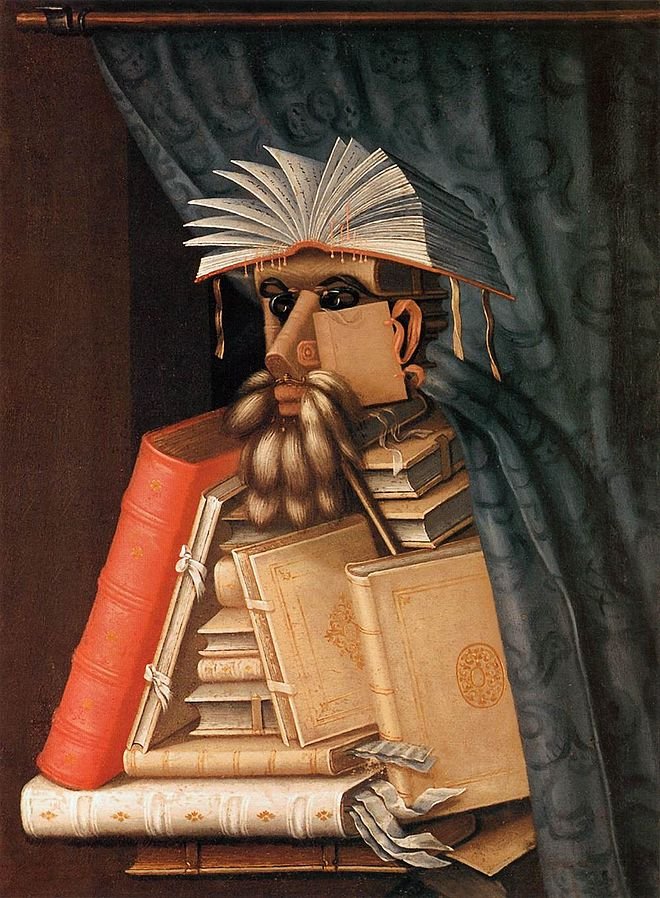 I've spent the last 14 months adding to and then revising a novel. It jumped from approximately 30,000 words to 73,000 words inside of a few short months. Then came all the revisions. I dove into each story and read and reread sentence after sentence, smoothing out the edges and slicing deeper details. Unsettled Between has changed dramatically and in the most beautiful ways. The thematic concept is much cleaner. The stories are further developed. The characters have richer personalities--all the characters--whether static or dynamic. And how was I able to alter a few stories into a full length novel? Inspiration.I'm going to be real honest here. Before I found representation for my novel, I had lost a great deal of inspiration. As many writers can in the ups and downs of life. I had written a couple of the stories in Unsettled Between from 2008 to 2010. They were published in journals ("Our Day" in American Short Fiction and "Time Like Masks" in South Dakota Review"). It was enough to give me a surge of inspiration. Success, even modest success, can give a writer enough fuel to burn for a full length novel.I sent one of the stories to Oxford American, which is a journal I dream of getting published with, and the editor turned it down but he wrote a little note in the corner saying something to effect of "Please submit more fiction in the future. I enjoyed your story," and this little note gave me additional inspiration to continue. So I completed a few more stories, and then a few more, and soon I had enough stories to call this a novel. But it was weak. It needed a lot of development.
I've spent the last 14 months adding to and then revising a novel. It jumped from approximately 30,000 words to 73,000 words inside of a few short months. Then came all the revisions. I dove into each story and read and reread sentence after sentence, smoothing out the edges and slicing deeper details. Unsettled Between has changed dramatically and in the most beautiful ways. The thematic concept is much cleaner. The stories are further developed. The characters have richer personalities--all the characters--whether static or dynamic. And how was I able to alter a few stories into a full length novel? Inspiration.I'm going to be real honest here. Before I found representation for my novel, I had lost a great deal of inspiration. As many writers can in the ups and downs of life. I had written a couple of the stories in Unsettled Between from 2008 to 2010. They were published in journals ("Our Day" in American Short Fiction and "Time Like Masks" in South Dakota Review"). It was enough to give me a surge of inspiration. Success, even modest success, can give a writer enough fuel to burn for a full length novel.I sent one of the stories to Oxford American, which is a journal I dream of getting published with, and the editor turned it down but he wrote a little note in the corner saying something to effect of "Please submit more fiction in the future. I enjoyed your story," and this little note gave me additional inspiration to continue. So I completed a few more stories, and then a few more, and soon I had enough stories to call this a novel. But it was weak. It needed a lot of development. 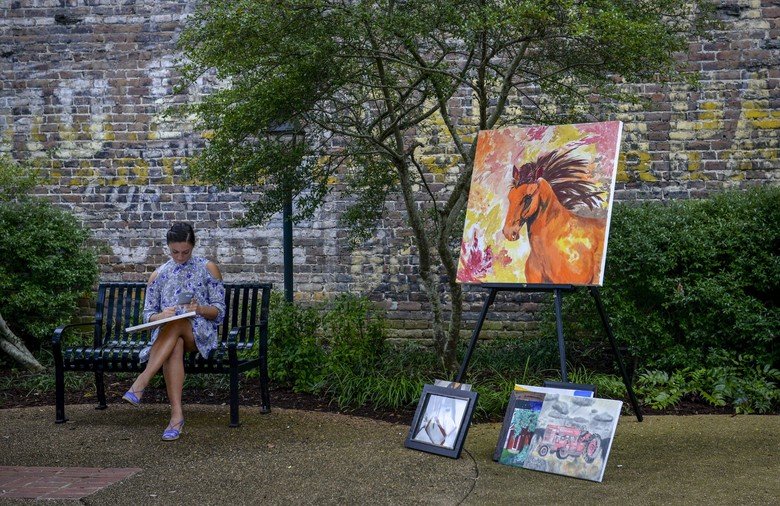 It was 2012 and I wanted some type of success. I needed inspiration. I knew if I could get someone to grab onto my book I'd have renewed energy. So I started sending out queries and got a request for a partial but the agent never even gave me a "No, thank you." The request came quickly in my querying process so I stopped sending out queries, which turned out to be a mistake. The agent never returned my email. And I emailed a few times asking for updates. But nothing. I was young in my career and took this as a defeat. In hindsight, I should've just kept querying. I hadn't submitted to very many agents. But I was naive and new to the game. I was defeated, or felt defeated, like maybe giving up was the only option. Soon I stopped carrying around my laptop and I forgot about the flash drives.A few years passed. I got divorced. Moved back to Oklahoma. Started raising my kids as a single parent. Life swept in like a tornado and carried me into a version of myself I didn't recognize.
It was 2012 and I wanted some type of success. I needed inspiration. I knew if I could get someone to grab onto my book I'd have renewed energy. So I started sending out queries and got a request for a partial but the agent never even gave me a "No, thank you." The request came quickly in my querying process so I stopped sending out queries, which turned out to be a mistake. The agent never returned my email. And I emailed a few times asking for updates. But nothing. I was young in my career and took this as a defeat. In hindsight, I should've just kept querying. I hadn't submitted to very many agents. But I was naive and new to the game. I was defeated, or felt defeated, like maybe giving up was the only option. Soon I stopped carrying around my laptop and I forgot about the flash drives.A few years passed. I got divorced. Moved back to Oklahoma. Started raising my kids as a single parent. Life swept in like a tornado and carried me into a version of myself I didn't recognize.
“When I sit down to write a book, I do not say to myself, ‘I am going to produce a work of art.’ I write it because there is some lie that I want to expose, some fact to which I want to draw attention, and my initial concern is to get a hearing.” — George Orwell
Then in 2015, I got this idea for a novel. Not the collection of stories I had written. Those stories I couldn't even look at. In fact, I couldn't even slide the flash drive with those stories into a USB. There was something psychological keeping me from going back. I told myself I needed to move forward. Keep thinking positive. So I wrote another novel, Uncle Called Him Spider. You can find posts on this blog where I work out kinks in the storyline. But this new idea was enough to get me believing I was a writer again. 60,000 words later. I had no doubt.So being in awe of my accomplishment. Writing 60,000 words is heavy lifting and it took me about six months to complete the first draft. Then I started the revisions and deepening the novel. After a year I had a solid "draft" of Uncle Called Him Spider. It was solid enough to call a draft and had interlaced subplots with protagonist and antagonist battling for top spot in a very esoteric field. It was different. I hadn't read a novel like it before so it left me feeling good about my hard work.
“There are no laws for the novel. There never have been, nor can there ever be.” — Doris Lessing
So late 2017 and early 2018, I start thinking about those stories. I'm like, "Maybe I should try to reread a few of them." Then a friend asked if I was working on any fiction. I told him about the new novel, but in the back of my mind I thought about those stories. His very considerate and thoughtful question was a springboard. Suddenly, I started thinking about the collection of stories again.I decided to try to slide a "certain" flash drive into a USB. And it worked. After reading the collection, I suddenly had a new vision for the book. So most of the stories were booted. They either didn't fit into this new concept or I felt like they just weren't good enough. So I wrote new stories. Then I polished them to a point where they were more than solid. They were ready to be published in journals. But my earlier defeat left me too frail to consider putting myself on the line. I couldn't handle the rejection, or the repeated rejection. Maybe one or two. But the dozens it can take to get a story published was going to be too much.
“If it sounds like writing, I rewrite it.” — Elmore Leonard
Then I heard of this event on Twitter. It was called #Dvpit (Diverse Voice Pitch) event. It was a simple but brilliant concept. You developed a twitter sized pitch of your novel. On the day of the event, you post the tweet. If an agent clicks on the heart icon, then you send them their requested material. I thought, this isn't nearly as brutal as the traditional querying process. I told myself, "It's a one time pitch," as opposed to the numerous I was visualizing. More importantly, it avoided the numerous rejections. Plus, it was new, different, and I got a little excited about it. So I marked it on my calendar and wrote a pitch. I polished over several weeks, reading and rereading until it was tight and succinct.I was surprised when multiple agents from large literary agencies started clicking on my tweet. What I liked most was how this pitching event gave me a sense that I was on the right track. It gave me inspiration. Long story short, I landed an agent. I couldn't believe my luck. The excitement carried over into the revision process. I was so beyond inspired that when my agent asked me to more than double the novel, I did so in a few short months. It almost felt easy. Likely because I was inspired by the success of working with an agent and speaking with someone who cared as much about my novel as I did.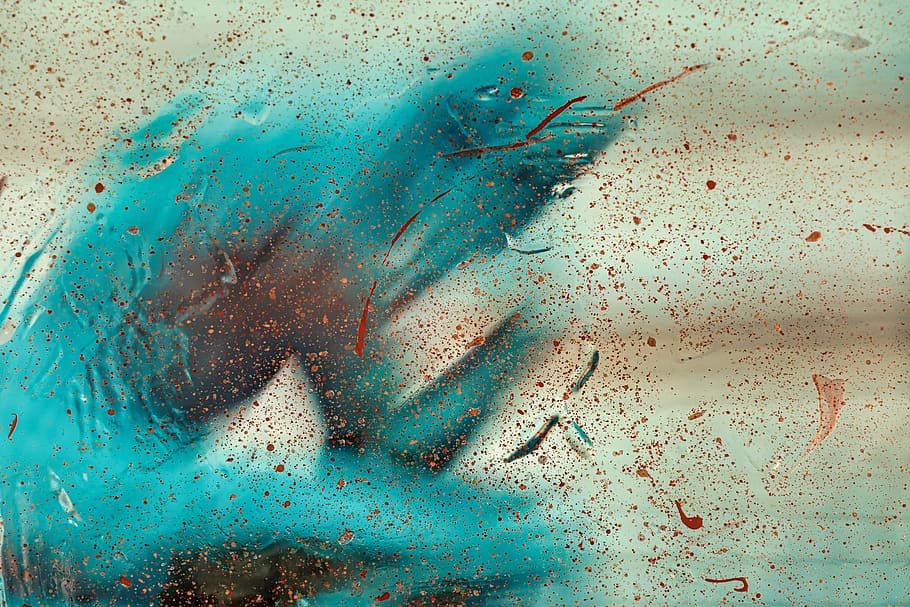 I can't tell you how lucky I am to be working with my agent, Allie Levick. I highly recommend querying her if you have a full manuscript to offer. As I reflect back on the last 14 months, she has asked me to look at specific pieces of the story in new ways. She's very hands on with the development and cares a lot about her work. I have high standards when it comes to professionalism. Allie carries herself as a true professional and I highly respect her opinion. A good agent will offer creative feedback, but one steeped in the rigors of her profession will inspire.So over the last few weeks, as I disappeared into revision work, I've thought a lot about things, like Baudrillard and love, cohesion and cooperation. I've seen people using "competition" to work themselves up. But I find inspiration to be the most impacting on art and life. In fact, from the competitiveness I've witnessed, I can see how inspired people energize themselves and the uninspired feed off the inspiration of others. Competition is only a fading copy of inspiration. Personally, I simply seek out inspiration or wait for it and trust it'll find its way toward me. Then once my spirit has risen with its power, I hold onto it as long as I can.
I can't tell you how lucky I am to be working with my agent, Allie Levick. I highly recommend querying her if you have a full manuscript to offer. As I reflect back on the last 14 months, she has asked me to look at specific pieces of the story in new ways. She's very hands on with the development and cares a lot about her work. I have high standards when it comes to professionalism. Allie carries herself as a true professional and I highly respect her opinion. A good agent will offer creative feedback, but one steeped in the rigors of her profession will inspire.So over the last few weeks, as I disappeared into revision work, I've thought a lot about things, like Baudrillard and love, cohesion and cooperation. I've seen people using "competition" to work themselves up. But I find inspiration to be the most impacting on art and life. In fact, from the competitiveness I've witnessed, I can see how inspired people energize themselves and the uninspired feed off the inspiration of others. Competition is only a fading copy of inspiration. Personally, I simply seek out inspiration or wait for it and trust it'll find its way toward me. Then once my spirit has risen with its power, I hold onto it as long as I can.
Support a Native owned Etsy shop, Allies United, where I offer unique merch for allies of social justice movements, like MMIW, Native Lives Matter and Black Lives Matter. Take a look inside my Etsy shop here: etsy.com/shop/AlliesUnited.
(Images were borrowed from wikipedia, columbus,af.mil, and pxfuel)
A Call to Gurus
This article is a confession to my gurus. Well, maybe more of an apology. Or a humble request for forgiveness. Okay, it's a mixture of all three. Sometimes I can be an asshole. More so when I was younger and before life kicked my sorry brown ass into submission. People say they love writers who have had the life beaten out of them. That'll be my remaining solace in this whole matter: I'm only likable after bruises on the side of the face and a gash near the hairline.
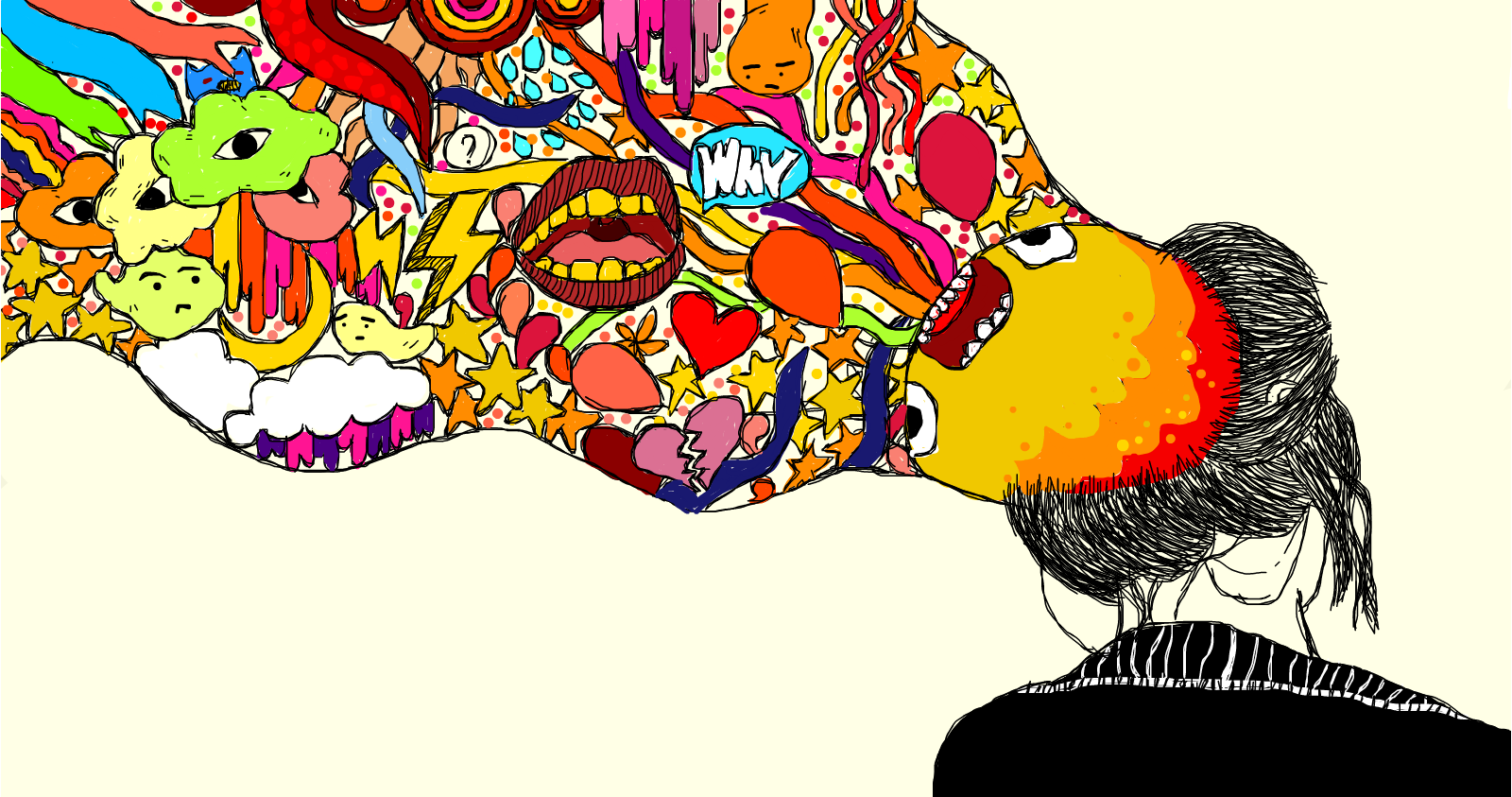
I was eight years old when I got into my first major argument with a teacher. I could've been seven, but I was young. In elementary school. What was the argument about? Or what passion could be evoked in an eight year old child that would set him off? It wasn't the obvious, like video games, food, or toys. It was spiders. Yup, the whole argument was about spiders. My stance was that spiders were evil. Yes, evil. My teacher kindly tried to enlighten me about the role of spiders in the cosmos. But I wouldn't hear it! "No! Spiders are evil!" I told her. And thus began my attack on gurus.
I'm a peace loving person, despite what we've seen so far from my eight-year-old self's stance on spiders (and, interestingly enough, my childhood nickname was Spider and family on my Kiowa side still call me Spider).
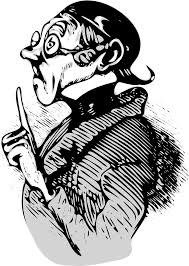 But when it came to teachers I've always had an odd and subtle defiance. But before we get too far into this business, you'll want to know what triggered me to write this article. I had an email exchange with someone who rightly pointed that I needed to make things right, that I had a history, going back lifetimes, where I insulted teachers and this was hurting my ability to grow as a person. There was nothing I could say in return. She was right. She hit the proverbial nail on the head, leaving me speechless.
But when it came to teachers I've always had an odd and subtle defiance. But before we get too far into this business, you'll want to know what triggered me to write this article. I had an email exchange with someone who rightly pointed that I needed to make things right, that I had a history, going back lifetimes, where I insulted teachers and this was hurting my ability to grow as a person. There was nothing I could say in return. She was right. She hit the proverbial nail on the head, leaving me speechless.
This has extended into my adulthood and it runs so subconsciously that I recently inserted an attack on a teacher in a recent article: From Tommy Orange to the Institute of American Indian Arts: Plains Tribes Battle for “Powwow” Terminology in Contemporary America. What's wrong with me? I didn't name any names and wouldn't anyway, but to see this play out as recently as last week is astonishing.
“I am not a teacher, but an awakener.” -- Robert Frost
Certainly, while I was at the Institute of American Indian Arts I was a pain in the ass. My professors are nice to me about it all. I was young and they're forgiving (thankfully). But this affected me to such a degree that this morning I started emailing all my old instructors. One after the other. I told them how much I appreciated their guidance and apologized for being an idiot. Time is the best teacher of all, and time says to appreciate people while they're in front of me. But yes, I emailed numerous teachers this morning. All but one has emailed back so far, and each were appreciative that I reached out (some I hadn't spoken to in nearly a decade).
“Teaching is the greatest act of optimism.” -- Colleen Wilcox
I wish I could find all the teachers I transgressed (and yes it was that many). If push comes to shove, I will. But I figured at minimum I should contact the ones I still had access to and then write this article. Let's call it a start. No one is perfect, certainly, and likely my missteps may have not been to a severe degree, but ultimately that's not up to me to decide. I transgressed and I should apologize. Simple, straightforward, and honest. I know it's not okay (no matter how I justified the actions). Teachers put their wisdom on the line when they offer guidance to their students. So I shouldn't have been so callous.
Support a Native owned Etsy shop, Allies United, where I offer unique merch for allies of social justice movements, like MMIW, Native Lives Matter and Black Lives Matter. Take a look inside my Etsy shop here: etsy.com/shop/AlliesUnited.
How to Smudge with Sage & Native American Customs for Prayer
I've had several people inquire about practices and customs associated with smudging. I decided to cleanse myself today so I thought I'd make a short video on rituals I've learned over the years. This is by no means anything dogmatic. These are just methods that I've learned over the years. I'm Kiowa and Cherokee, and I've incorporated practices between both cultures and lessons I've learned personally through doing this routinely that work for me.I hope you enjoy the video. Please feel free to share with as many folks as you like, and if you have questions reach out to me in the comments. Wa'do, have a blessed day, and if you're interested in Native American fiction please support my debut novel, CALLING FOR A BLANKET DANCE: Bookshop, Amazon, B&N, IndieBound.https://www.youtube.com/watch?v=Z3GGFIfJY0Q
On Writing an "Indian Child Welfare" Novel & Other Grand Adventures
I hiked into the Grand Canyon. I must've been in my late twenties, maybe early thirties. It started out as a walk to look over the rim. I had camped the night before in a tent at one of the sites and woke early (probably about 5am). I was there with a friend and she was still asleep. As the sun rose out of the east, I decided to follow the paved roads toward the rim of the Grand Canyon.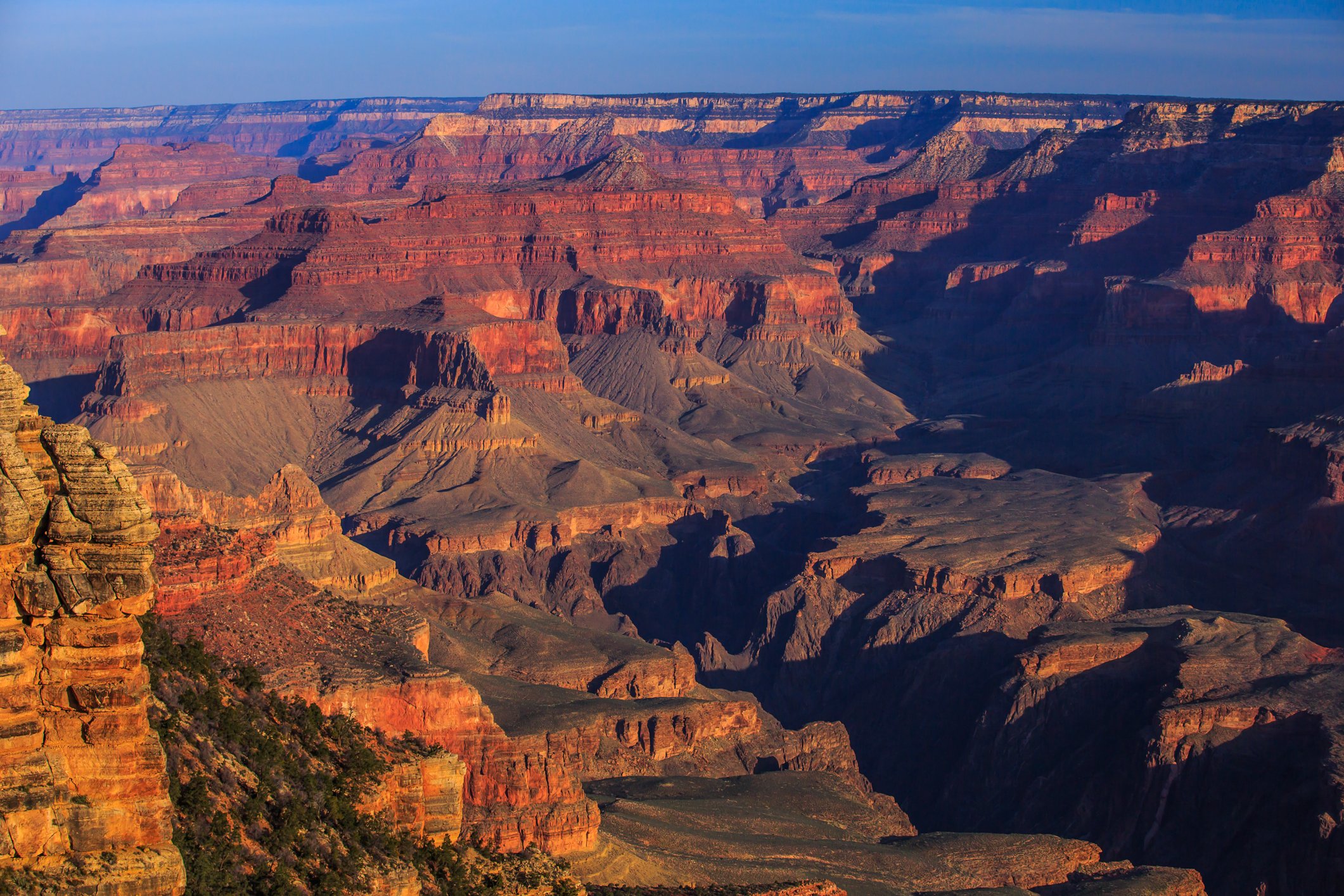 It was nice to be out so early in the morning. No one was around. It felt like the entire world was mine alone. I strolled on the sidewalk lining the edge of the Grand Canyon mesmerized by the depth of the canyon and the streaming sunlight slowing filling it's center. It was beautiful, magical, and most of all peaceful.Then I happened upon an entrance. I didn't expect to find an invitation that day.
It was nice to be out so early in the morning. No one was around. It felt like the entire world was mine alone. I strolled on the sidewalk lining the edge of the Grand Canyon mesmerized by the depth of the canyon and the streaming sunlight slowing filling it's center. It was beautiful, magical, and most of all peaceful.Then I happened upon an entrance. I didn't expect to find an invitation that day.
“You can always edit a bad page. You can't edit a blank page.” ―
Similarly, I find stories as I stroll through my everyday. I'm always vigilant and, after being trained by the Institute of American Indian Arts and the University of Oklahoma, I see every moment as a beginning, middle, and end (a story).I've said this before. I write what I live, and create fiction by moving experiences around, compounding memories, and enhancing the "feeling" of a moment with embellishments. But embellishments can be made into entertainment when delivered as a book-sized package.I have three writing projects at the moment. Those of you who follow my blog likely know about two of those projects. The development of my novel, Uncle Called Him Spider, has been highlighted on this blog, and you can go back and find the collapse and expansion of those words in posts such as Gossip: Weapon of the Weak. It's in full first draft mode. I've revised a little but I've put it on hold. In fact, the reason I put it on hold lead me to another novel, or a novel-in-stories: Unsettled Between.
“A short story I have written long ago would barge into my house in the middle of the night, shake me awake and shout, 'Hey, this is no time for sleeping! You can't forget me, there's still more to write!' Impelled by that voice, I would find myself writing a novel.” ―
Unsettled Between began a decade ago. It's ten years in the making. I wrote one of it's first stories, Our Dance, with the help of instructors and classes at the Institute of American Indian Arts--this was around 2008. It was then published in 2010 with American Short Fiction. Then I developed another of it's stories, Time Like Masks, while completing my Master's Degree at the University of Oklahoma. It was picked up by South Dakota Review in 2011. Now, those stories are two of twelve in my novel, Unsettled Between. I'm proud to say it's rep'd by Allie Levick of Writers House.This brings me to the third project. This one is very recent. I'm calling it my "Indian Child Welfare" novel, as I develop the story-line to completion. As I had with Uncle Called Him Spider, I'll be brainstorming different components of the novel here on my blog. So be sure to click the "follow" button (not to sound too much like a YouTube video). I'm not going to give away much detail on this story. I tend to hold off on full disclosure until the novel has reached fruition. But as you read posts you'll be able to piece together what I'm struggling with, as far as what I need to capture, and where the novel is headed.
“You write about experiences partly to understand what they mean, partly not to lose them to time. To oblivion. But there's always the danger of the opposite happening. Losing the memory of the experience itself to the memory of writing about it.” ―
But I will say this: I've outlined 25 chapters and have developed a full synopsis of the novel at this point. I've worked out details that drive the action. But I've not written the first draft. That's my next step. So be sure to come back and check in. You'll find my frustrations and triumphs listed here. Often my brainstorming sessions show up at odd and unpredictable times. I'll also add: The world of child welfare is not what you think. I've worked for over ten years with at-risk populations and you might believe heroism has a certain purist quality to it, but I'll dispel that for you. I have a cast of characters in this "Indian Child Welfare" novel that'll both affirm and disrupt your belief in how people carry themselves in this field. When I say you'll be shocked, it's not about the obvious things. I don't dabble in the obvious. I advocate to "bare witness" to the unseen. No more secrets.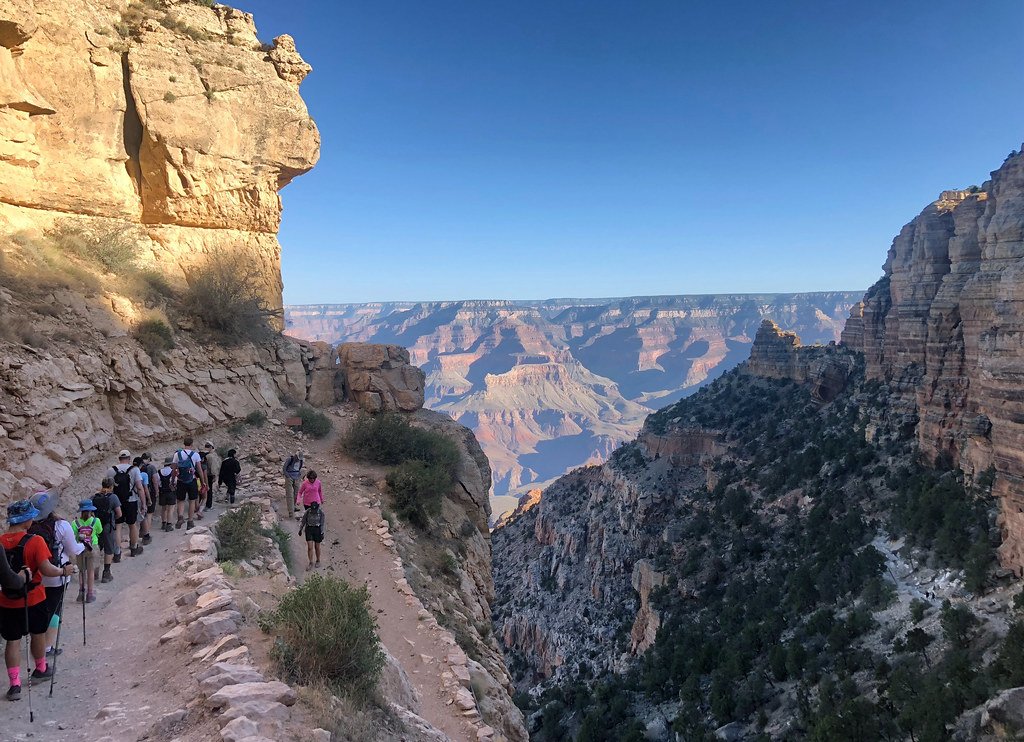 So back to my trek into the Grand Canyon. I hiked halfway down that day. I passed people hiking back up (exhaustion on their faces) and people riding donkeys (scary). It was beautiful watching the morning light grow into full afternoon. At the halfway point, there was a watering station. I filled my water bottle, sat next to other hikers in the shade, and contemplated on how easy it was to climb down.I realized that around four hours had passed and I needed to get back to camp. I hadn't told my companion that I was leaving. She was still asleep. I didn't want to wake her. Besides, I thought I was going on a light walk to the rim and back. Surely, I'd have returned before she woke. Then I ended up halfway down into the Grand Canyon. Needless to say, I drank as much water as my stomach could hold, refilled my water bottle, and started the trek back up.Three steps into climb and I thought, "Oh shit, what did I get myself into?" My legs suddenly grew tight and each step became work. I had used a different set of muscles to cruise down the edges of the canyon. Now I had to use larger muscles to climb up. Long story short, six hours later I finally pulled myself out of the canyon and back to the rim. If not for a kind and generous young man, who walked a good portion of the hike alongside me, maybe it would've take me longer. He was ten years younger and already a good conversationalist. Somehow I made it back to the rim and, by the time I made it back to camp, the sun was starting to set in the west.
So back to my trek into the Grand Canyon. I hiked halfway down that day. I passed people hiking back up (exhaustion on their faces) and people riding donkeys (scary). It was beautiful watching the morning light grow into full afternoon. At the halfway point, there was a watering station. I filled my water bottle, sat next to other hikers in the shade, and contemplated on how easy it was to climb down.I realized that around four hours had passed and I needed to get back to camp. I hadn't told my companion that I was leaving. She was still asleep. I didn't want to wake her. Besides, I thought I was going on a light walk to the rim and back. Surely, I'd have returned before she woke. Then I ended up halfway down into the Grand Canyon. Needless to say, I drank as much water as my stomach could hold, refilled my water bottle, and started the trek back up.Three steps into climb and I thought, "Oh shit, what did I get myself into?" My legs suddenly grew tight and each step became work. I had used a different set of muscles to cruise down the edges of the canyon. Now I had to use larger muscles to climb up. Long story short, six hours later I finally pulled myself out of the canyon and back to the rim. If not for a kind and generous young man, who walked a good portion of the hike alongside me, maybe it would've take me longer. He was ten years younger and already a good conversationalist. Somehow I made it back to the rim and, by the time I made it back to camp, the sun was starting to set in the west.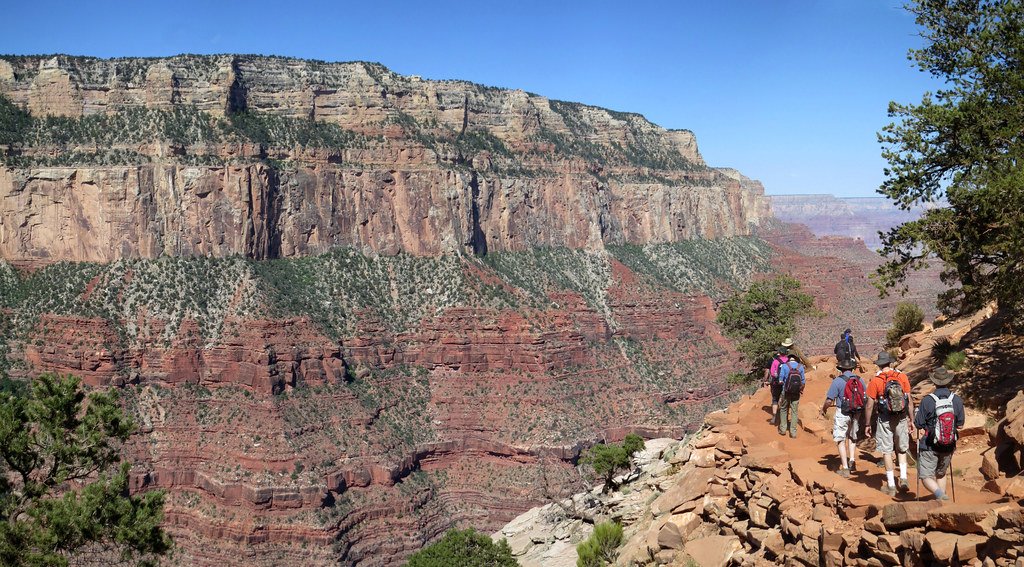 I apologized profusely to my companion, but she was kind about it all and made her own adventures that day. She, an artist herself, knew the flights of fancy we creative types tend to have. To this day, I can find myself on peculiar adventures at a moment's notice. And like novel writing, we stumble upon an entrance and dare ourselves to take the invitation. When we think we've completed the journey, we look up and find our challenge is only halfway complete. So here's to the next few steps.
I apologized profusely to my companion, but she was kind about it all and made her own adventures that day. She, an artist herself, knew the flights of fancy we creative types tend to have. To this day, I can find myself on peculiar adventures at a moment's notice. And like novel writing, we stumble upon an entrance and dare ourselves to take the invitation. When we think we've completed the journey, we look up and find our challenge is only halfway complete. So here's to the next few steps.
(Images were borrowed from flickr, pxhere, and wikipedia)
#1 Writing Rule: Be Teachable
We writers area equal parts ego and vulnerable. The cliché is to develop a "tough skin" over the years and be able to take criticism. But we all think we're geniuses, and we are. Brilliant beasts who are magical at hiding our softest parts behind a shield of "I already know" and "You just don't understand the work."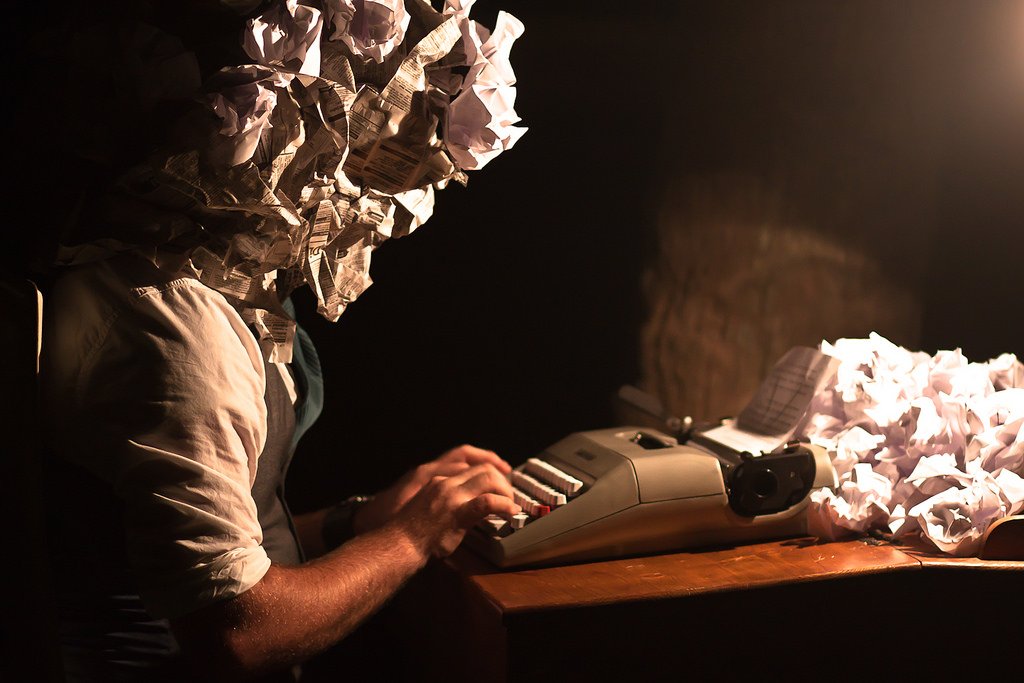 "Humble yourself, Oscar," often goes through my mind. One thing I've learned over the years of writing and revision and rejection and submission and rejection again and writing again and revision again is this: Be teachable.
"Humble yourself, Oscar," often goes through my mind. One thing I've learned over the years of writing and revision and rejection and submission and rejection again and writing again and revision again is this: Be teachable.
"The ultimate aim of the ego is not to see something, but to be something," By Muhammad Iqbal - Pakistani Poet
I say that and I also offer writers advice which will sound like a schism (and it is), but we need to retain our ego. We need to always remember we are undiscovered geniuses. We are the next brilliant thing to hit the writing world. We have the ability to transform this planet into something more habitable. And ultimately that's why we sit here everyday and write. To end oppression. To open up people's minds. To give readers a new way to look at life. Our genius is geared toward benevolence. Or at least that's what we tell ourselves, and I suggest we continue to do so.But at the same time we must be teachable. We must be able to take advice from other writers. It's the difference between wrestling against your ego and mastering it. When you are in control, you understand talent and skill must be executed with discipline.And the only way for a writer to obtain discipline is by listening to others.
Support a Native owned Etsy shop, Allies United, where I offer unique merch for allies of social justice movements, like MMIW, Native Lives Matter and Black Lives Matter. Take a look inside my Etsy shop here: etsy.com/shop/AlliesUnited.
(The above image was borrowed from Flickr)
The Magic of Intermountain Youth Center
I said it before. The last grade I completed was the sixth grade. Then later in life I went on to obtain a Master's Degree. I think a lot of it had to do with riding waves. Not in the ocean. I've never been daring enough to take on those types of challenges. But riding waves of opportunity. Sometimes I look back and it's interesting to see how it all lined up and came to fruition, as though in symmetry, like musical notes being plucked from the strings of a guitar. In time and rhythm it can make a beautiful song.So how do you go from being a severe introvert to completing programs in higher education? A lot of luck. A lot of patience.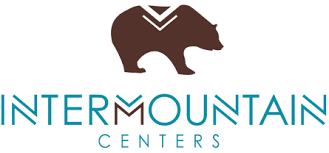 I give most credit to one organization: Intermountain Youth Centers. They were once located throughout New Mexico and had a facility in Colorado, but now they operate out of Arizona only. They are a behavioral health organization, whose beginnings were in Native American communities. When NM state started funneling money toward certain facilities, a place like Intermountain, which specialized in helping Native American youth, started to get less and less funding. In the end, Intermountain was too narrowly focused for New Mexico, who wanted to fund the fewest and least expensive behavioral health facilities. I worked in Santa Fe.There's something about being placed in a position to be a mentor that can change the way you see the world. I was a very negative person. Life was hard and assumed it would always be. When Intermountain employed me to run "strength based" programming with Native youth, I started to change. I had to be a role model who showed positivity for days at a time. If I was going to help these young men, I would need to follow the "strength based" model closely. In other words, I was bought into the organization. I believed in its philosophy.What happened? I went from being so negative that most of people reading this post right now would have never associated with me. I was not the type to draw people in. In fact, I was pretty good at pushing people away and keeping people at a distance. From that, I turned into someone who was always filled with gratitude. I was so greatly changed by Intermountain that I'm still guided by its philosophy. And I haven't been with the organization since 2009. I mostly say good things to people. When someone is trying to draw out negativity, I tend to start saying positive things. Not that I don't have my bad days like everyone else. But for the most part I tend to usually be in a good mood and like to focus on solutions and problem solving rather than wallowing in the muck of self pity.
I give most credit to one organization: Intermountain Youth Centers. They were once located throughout New Mexico and had a facility in Colorado, but now they operate out of Arizona only. They are a behavioral health organization, whose beginnings were in Native American communities. When NM state started funneling money toward certain facilities, a place like Intermountain, which specialized in helping Native American youth, started to get less and less funding. In the end, Intermountain was too narrowly focused for New Mexico, who wanted to fund the fewest and least expensive behavioral health facilities. I worked in Santa Fe.There's something about being placed in a position to be a mentor that can change the way you see the world. I was a very negative person. Life was hard and assumed it would always be. When Intermountain employed me to run "strength based" programming with Native youth, I started to change. I had to be a role model who showed positivity for days at a time. If I was going to help these young men, I would need to follow the "strength based" model closely. In other words, I was bought into the organization. I believed in its philosophy.What happened? I went from being so negative that most of people reading this post right now would have never associated with me. I was not the type to draw people in. In fact, I was pretty good at pushing people away and keeping people at a distance. From that, I turned into someone who was always filled with gratitude. I was so greatly changed by Intermountain that I'm still guided by its philosophy. And I haven't been with the organization since 2009. I mostly say good things to people. When someone is trying to draw out negativity, I tend to start saying positive things. Not that I don't have my bad days like everyone else. But for the most part I tend to usually be in a good mood and like to focus on solutions and problem solving rather than wallowing in the muck of self pity.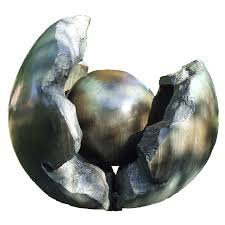 I was with Intermountain for about six years and it took the majority of that time to make the complete transformation. They say every cell in your body is made new by regeneration every seven years. I'd say it was pretty close to that mark. My DNA must have been changed in that space of time. I certainly don't feel like the person I was before Intermountain. Now that I'm back in my hometown of Tahlequah, Oklahoma it's interesting to see how hard it is for people who knew me before to let me change. I don't think people like to let other people change. But that'll have to be a post for another day.All in all: I'm lucky. I interact with people all the time, many in the latter years of their life, and they're miserable people. Ultimately, it's sad. I'm a firm believer in leading by example. My element of persuasion is just being myself. I'm not in the business of recruiting. Largely because it's counterproductive. The next time missionaries knock on your door see how fast you run to the back of the house.I see people who have good hearts allowing themselves to be swallowed by anger, frustration, and hatred. I wish I could give them my experiences at Intermountain so they'd have a chance to change for the better. We do the world service by just being positive and helping each other out. We have to trust and allow people to change on their own time.(Works Cited: Images above were borrowed from intermountcenters.com and maxpixel.com)
I was with Intermountain for about six years and it took the majority of that time to make the complete transformation. They say every cell in your body is made new by regeneration every seven years. I'd say it was pretty close to that mark. My DNA must have been changed in that space of time. I certainly don't feel like the person I was before Intermountain. Now that I'm back in my hometown of Tahlequah, Oklahoma it's interesting to see how hard it is for people who knew me before to let me change. I don't think people like to let other people change. But that'll have to be a post for another day.All in all: I'm lucky. I interact with people all the time, many in the latter years of their life, and they're miserable people. Ultimately, it's sad. I'm a firm believer in leading by example. My element of persuasion is just being myself. I'm not in the business of recruiting. Largely because it's counterproductive. The next time missionaries knock on your door see how fast you run to the back of the house.I see people who have good hearts allowing themselves to be swallowed by anger, frustration, and hatred. I wish I could give them my experiences at Intermountain so they'd have a chance to change for the better. We do the world service by just being positive and helping each other out. We have to trust and allow people to change on their own time.(Works Cited: Images above were borrowed from intermountcenters.com and maxpixel.com)
Resistance Literature: A New Wave of Intellectual Engagement
So I'm walking through a bookstore in downtown Santa Fe, New Mexico and I'm reading blurbs. I'm not going to blast any artists. That's not what I'm about. We all come from a different set of experiences. But why are mainstream book publisher publishing the same narrative over and over and over and over? These blurbs seeming lay out different storylines, but when you look at the macro's macro you start to see a pattern. Maybe it's because I'm Native. But I want to see resistance. Marches and protests are great and if they show up in literature then fantastic, but what I'm proposing is literature that deconstructs the system. I'm talking about a symbolic code that will inform others on how to fight back, on what has worked for them in rearranging the parts in the system. For me, resistance isn't about destruction, but instead it's more about moving parts around.
Maybe it's because I'm Native. But I want to see resistance. Marches and protests are great and if they show up in literature then fantastic, but what I'm proposing is literature that deconstructs the system. I'm talking about a symbolic code that will inform others on how to fight back, on what has worked for them in rearranging the parts in the system. For me, resistance isn't about destruction, but instead it's more about moving parts around. The novel I'm working on now, Uncle Called Him Spider, shows a group of Natives (Kiowa, Cherokee, and Muskogee-Creek) battling with an overbearing boss. It's not done in a dismissive comedy routine to release your pressure valve, like those popular movies and television shows. I'm not trying to make you a complacent slave. I'm trying to show you the underground railroad. In the novel, you watch as Natives struggle with each other and with values imposed on them by this boss. You get to see exactly how they resist and you get to see how they discipline each other to teach resistance. The main character, Dean, takes something from each of his coworkers and empowers himself to stand up against this boss.How does it all end? Does he redeem himself and his coworkers? Well, once the novel has completed it's final stage of revision I'll be able to get it out to you. But for now know this: Resistance literature is the next wave of intellectual entertainment.How many artists will help me take up this cause? If you're interested in engaging in a diverse didactic calling which shows how fighting back works for you, then click on the social media icons below. Let's reach as many artists as we can.
The novel I'm working on now, Uncle Called Him Spider, shows a group of Natives (Kiowa, Cherokee, and Muskogee-Creek) battling with an overbearing boss. It's not done in a dismissive comedy routine to release your pressure valve, like those popular movies and television shows. I'm not trying to make you a complacent slave. I'm trying to show you the underground railroad. In the novel, you watch as Natives struggle with each other and with values imposed on them by this boss. You get to see exactly how they resist and you get to see how they discipline each other to teach resistance. The main character, Dean, takes something from each of his coworkers and empowers himself to stand up against this boss.How does it all end? Does he redeem himself and his coworkers? Well, once the novel has completed it's final stage of revision I'll be able to get it out to you. But for now know this: Resistance literature is the next wave of intellectual entertainment.How many artists will help me take up this cause? If you're interested in engaging in a diverse didactic calling which shows how fighting back works for you, then click on the social media icons below. Let's reach as many artists as we can.
Support a Native owned Etsy shop, Allies United, where I offer unique merch for allies of social justice movements, like MMIW, Native Lives Matter and Black Lives Matter. Take a look inside my Etsy shop here: etsy.com/shop/AlliesUnited.
(Works Cited: Images borrowed from Wikimedia Commons)






